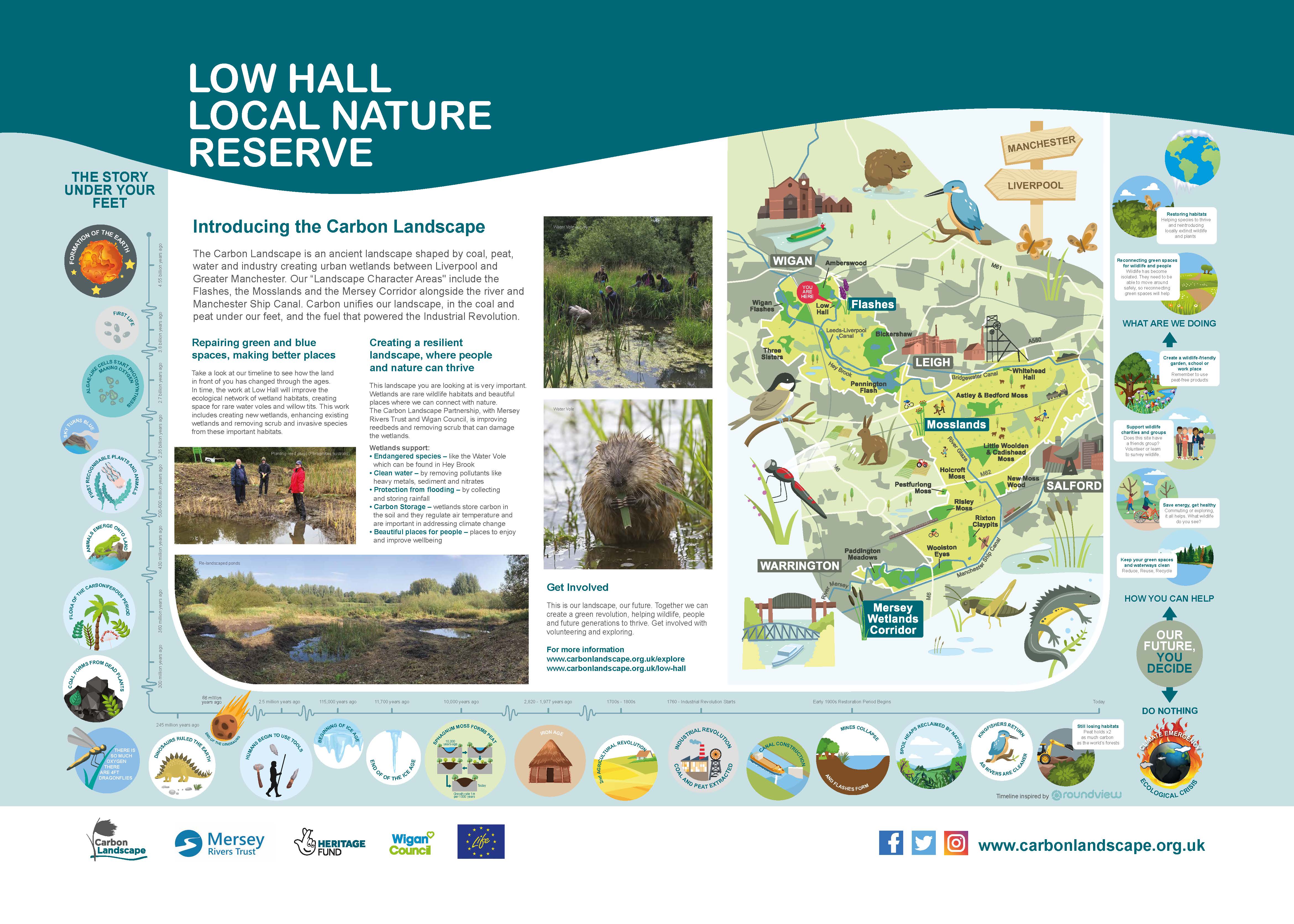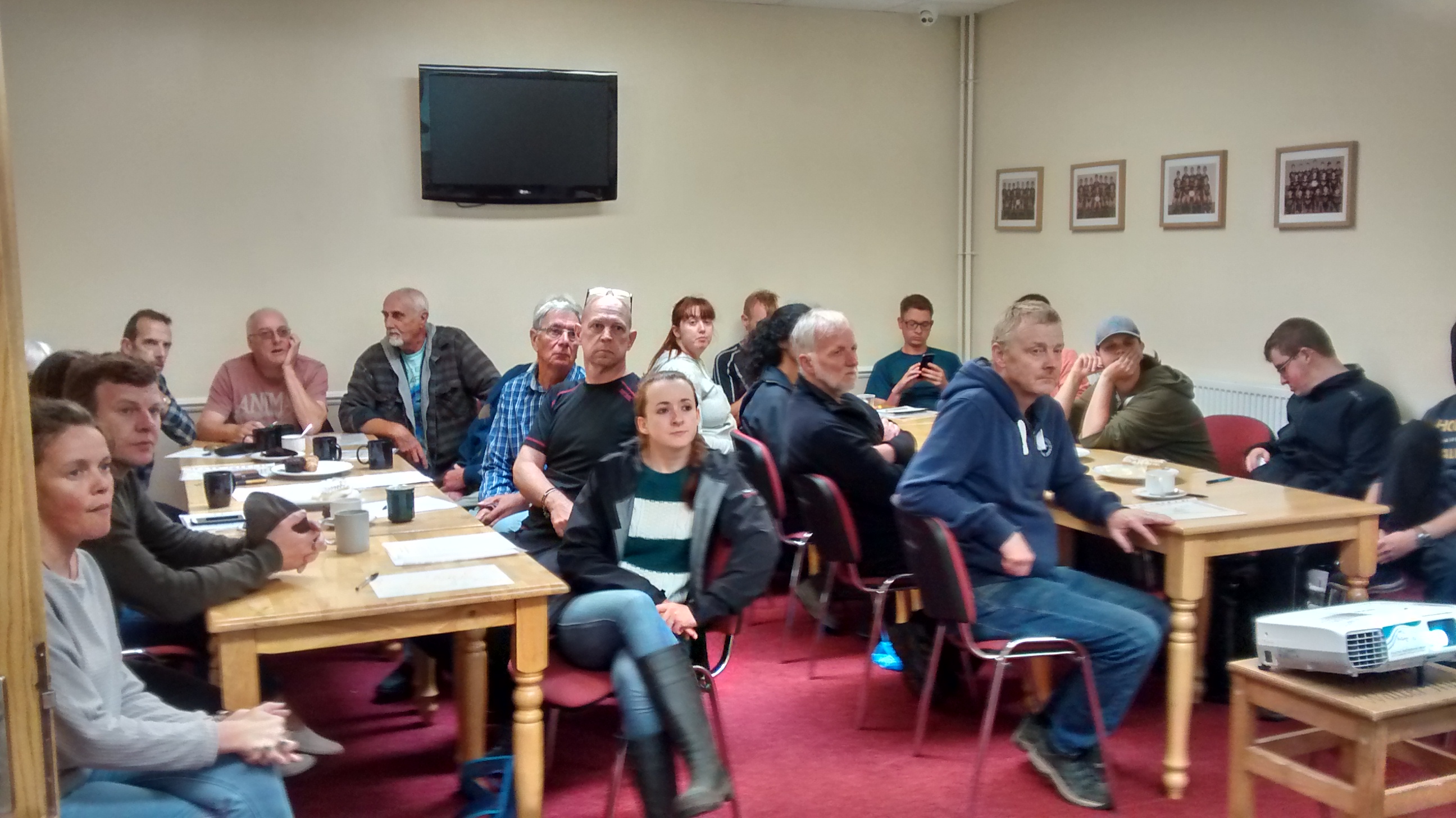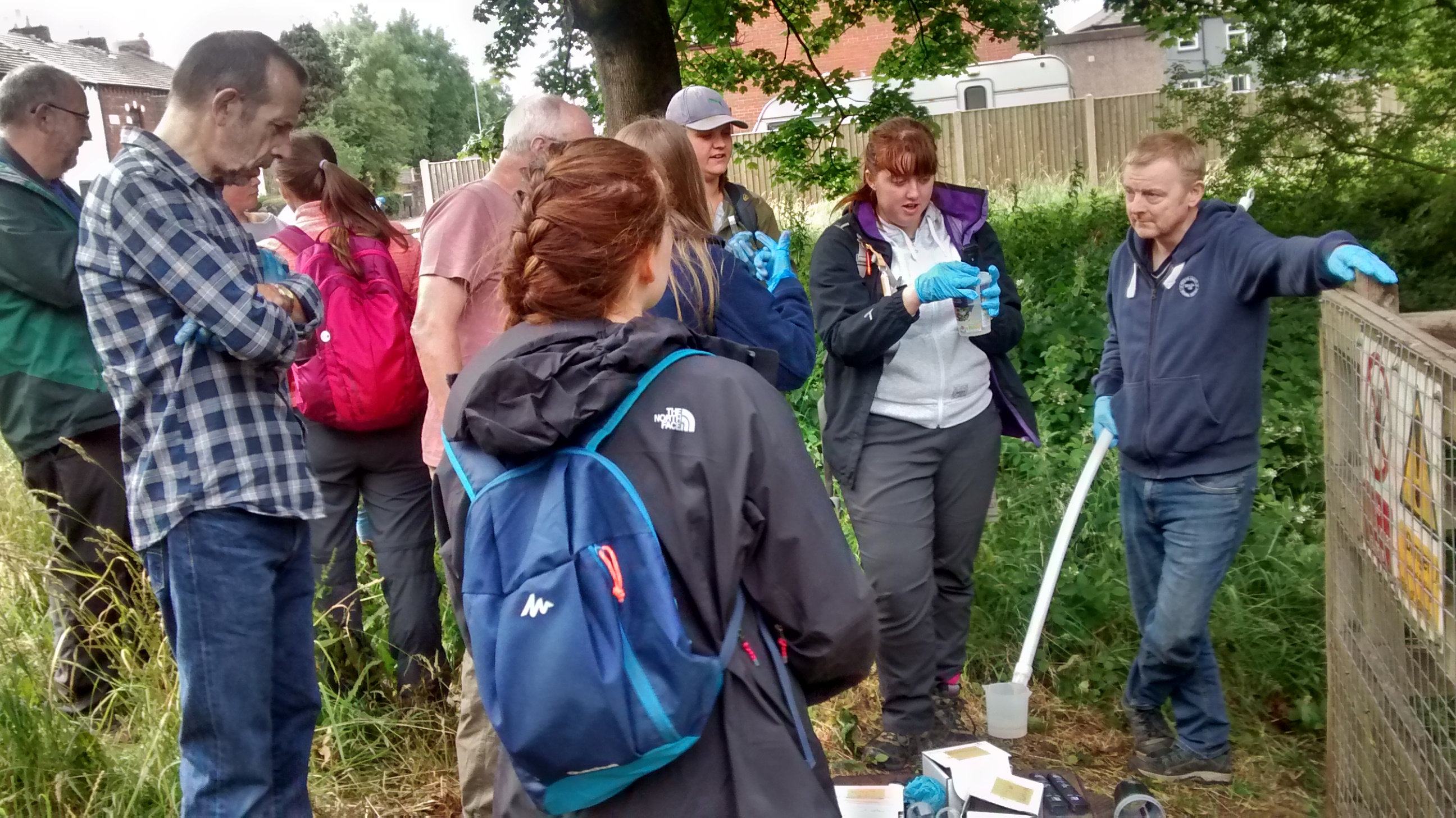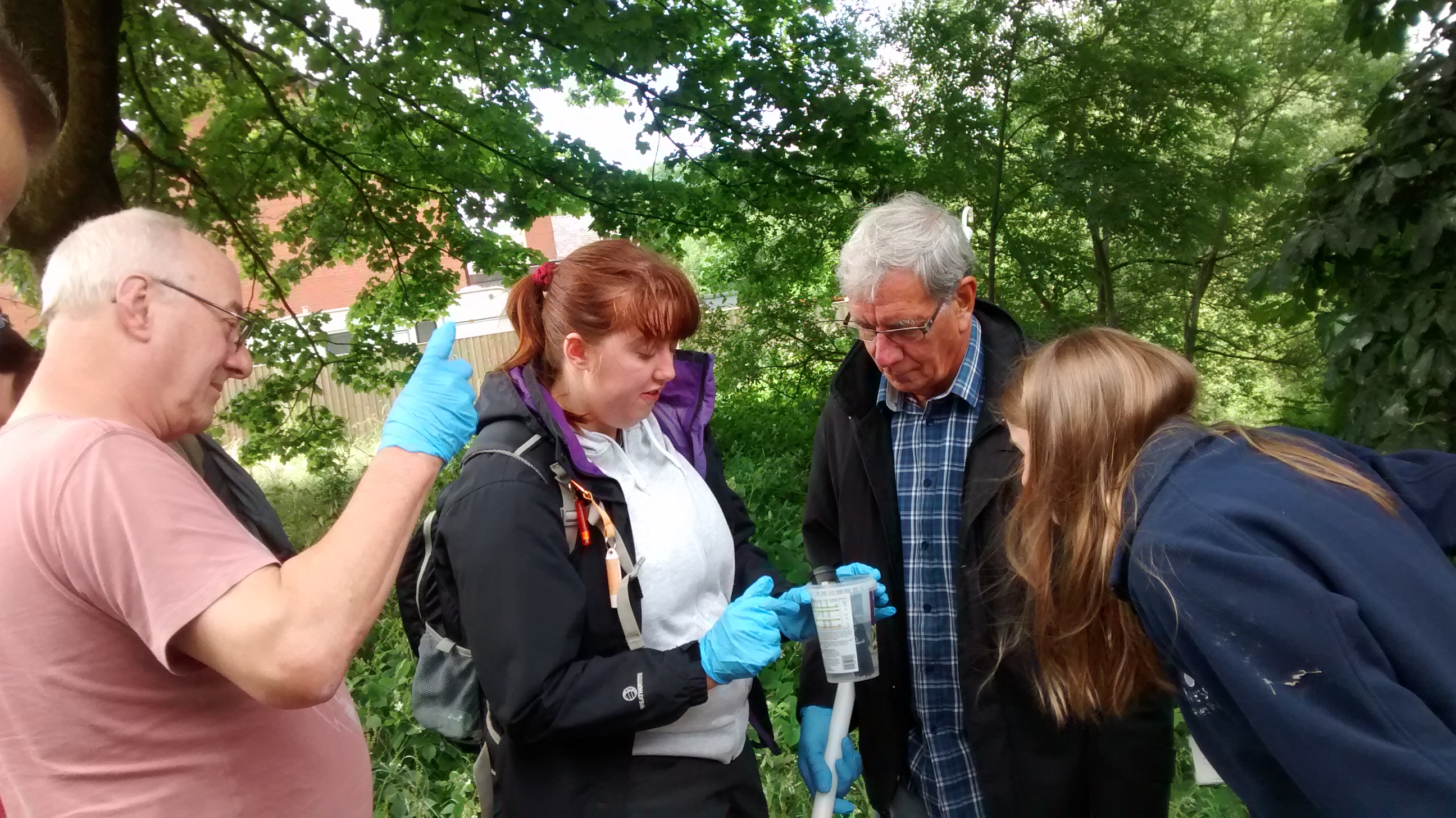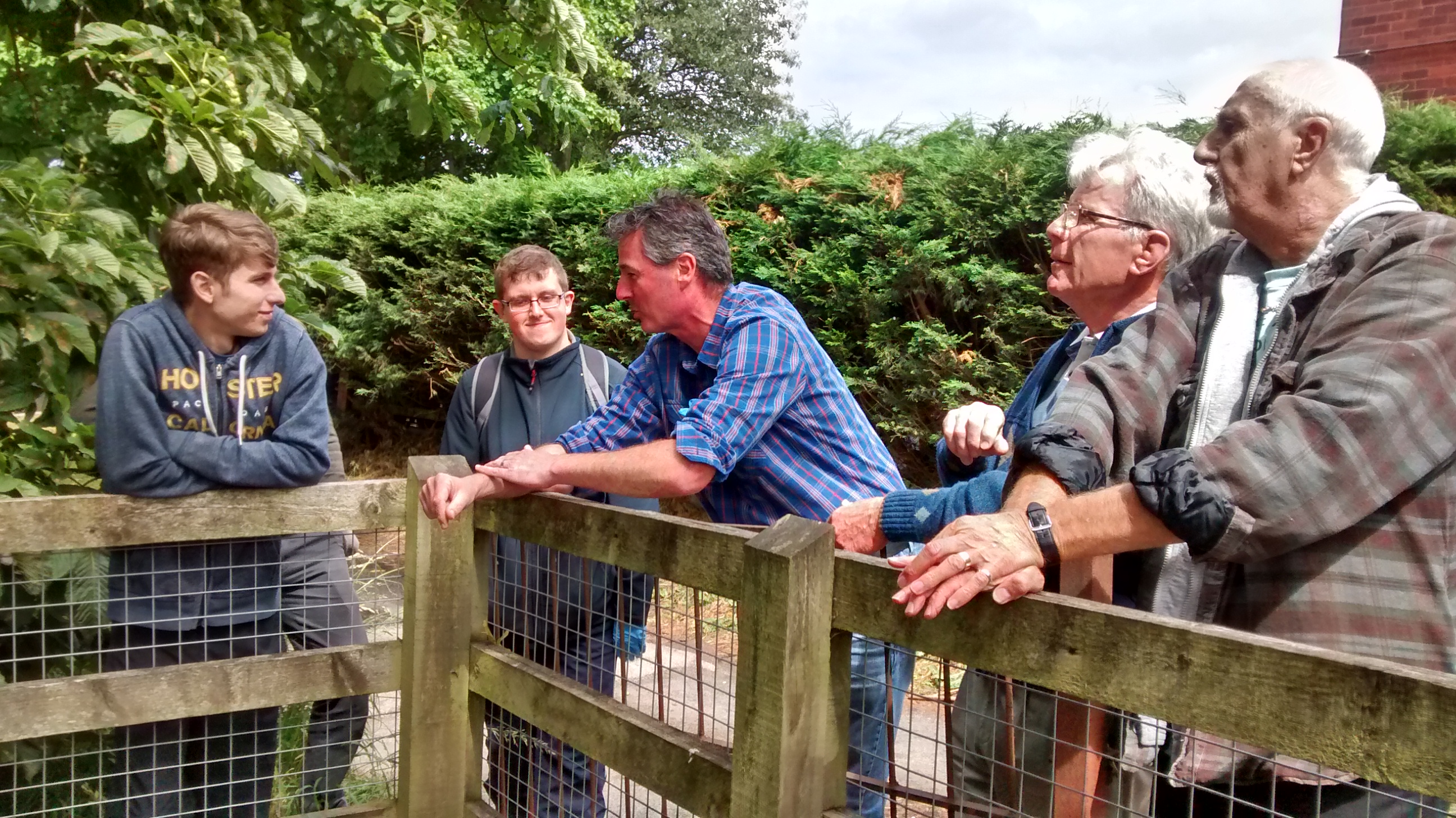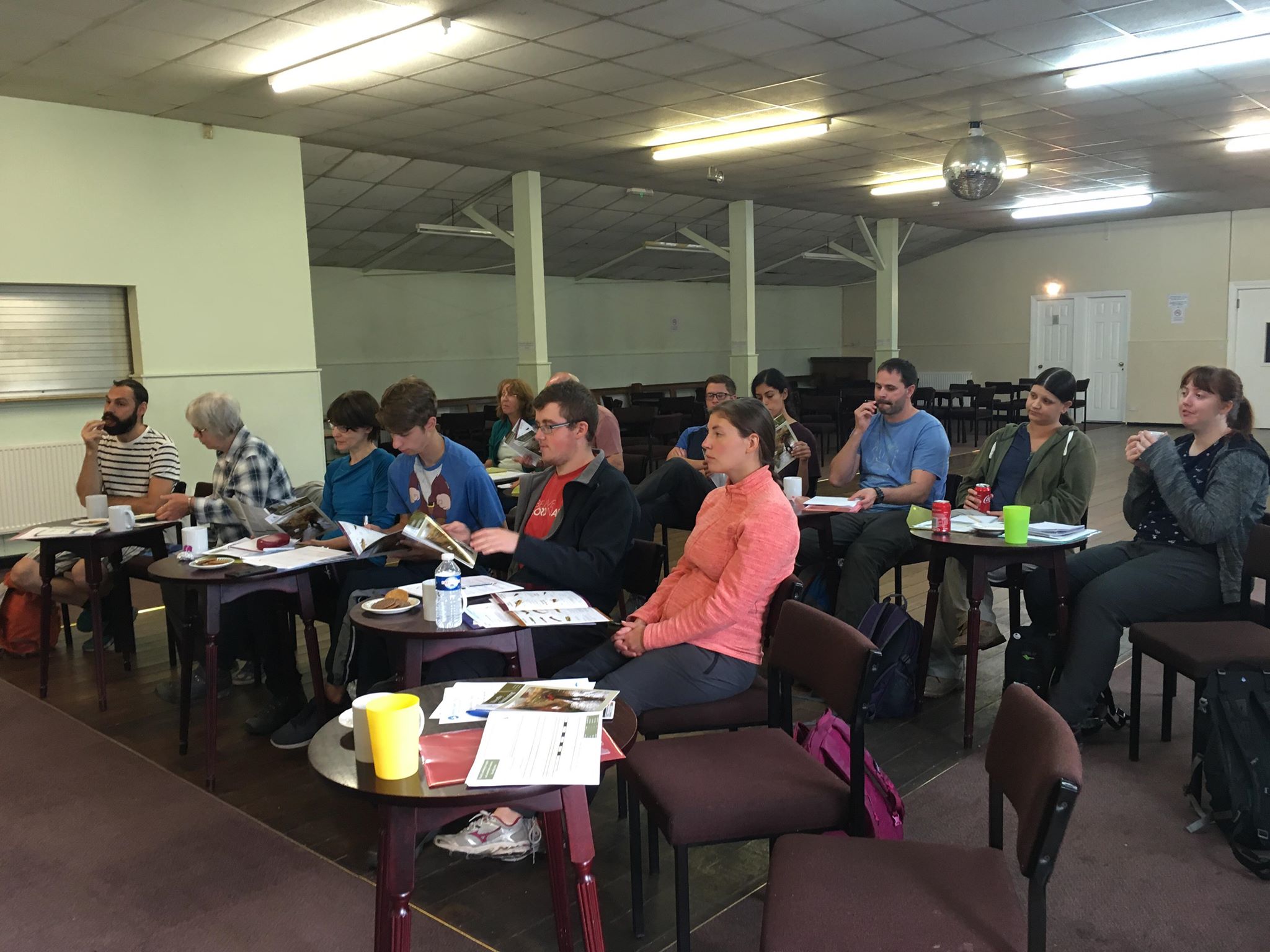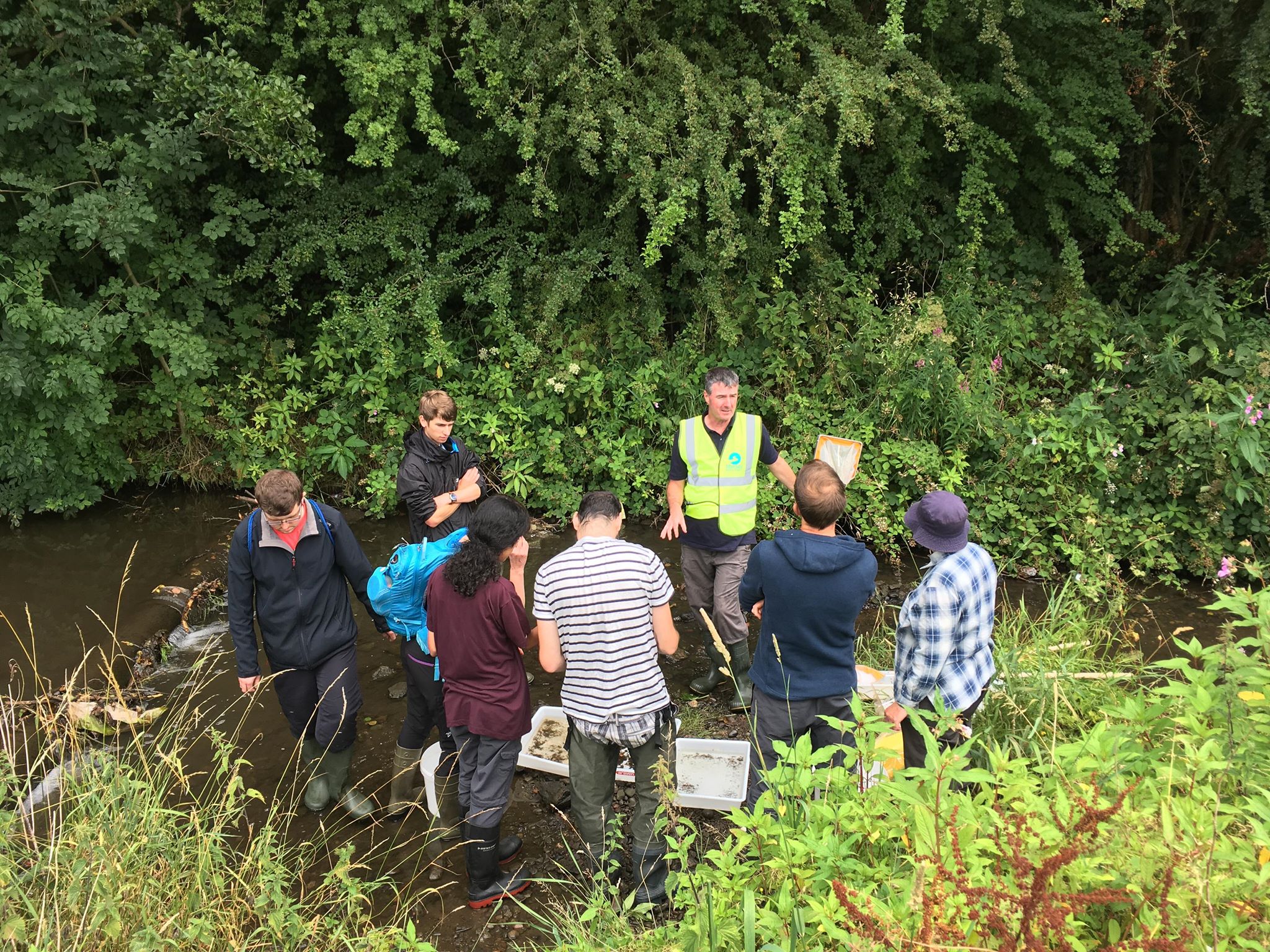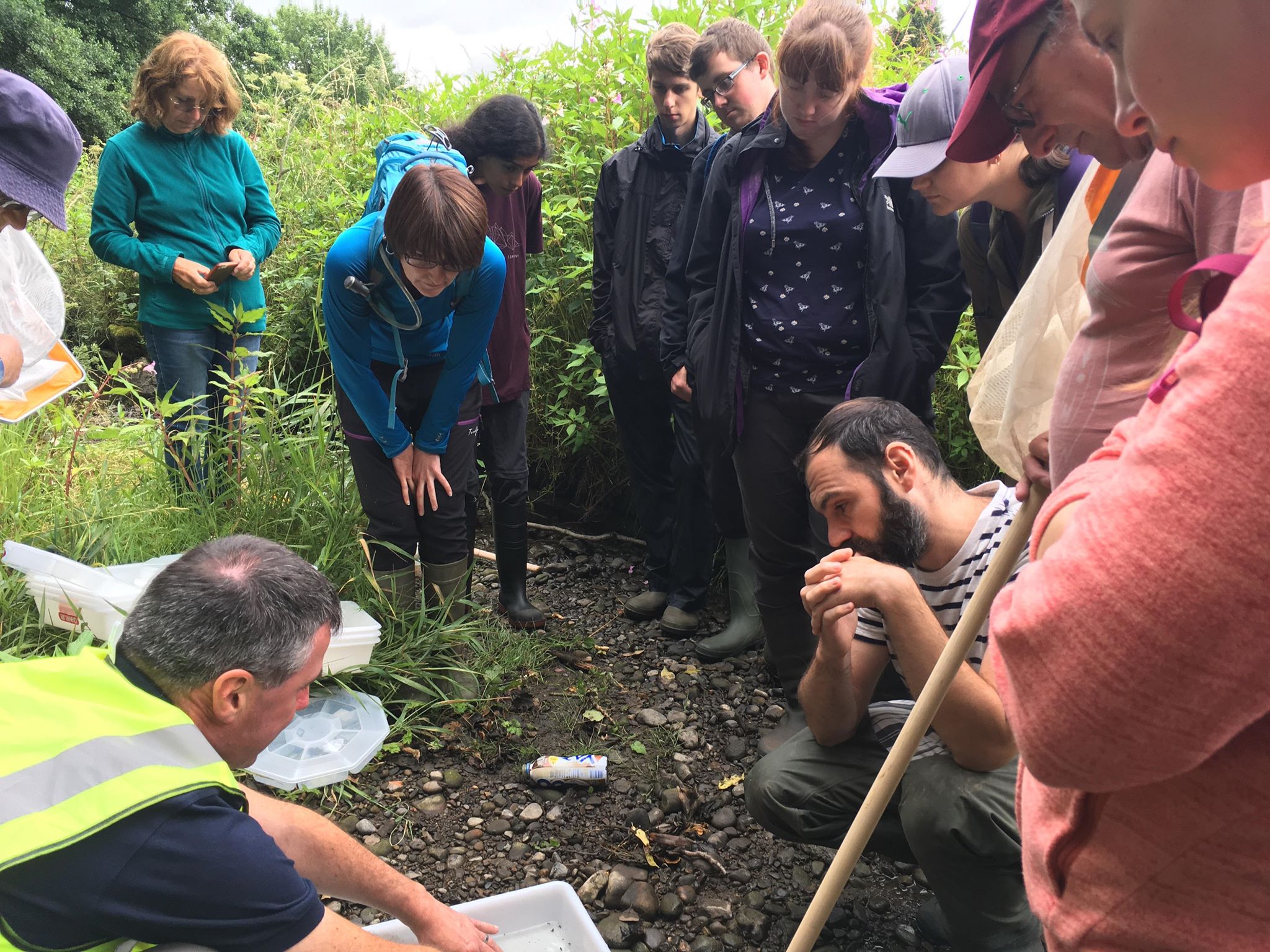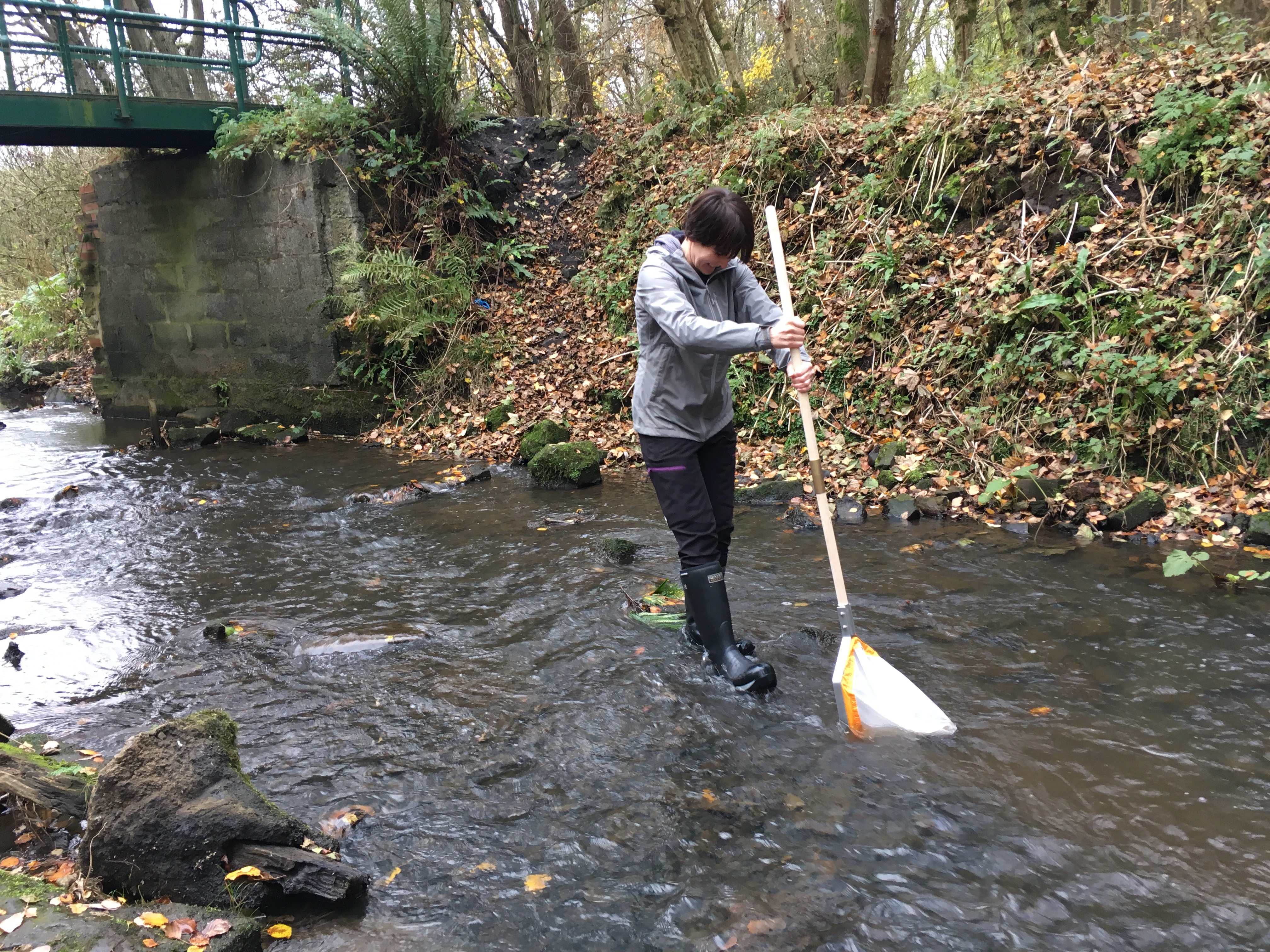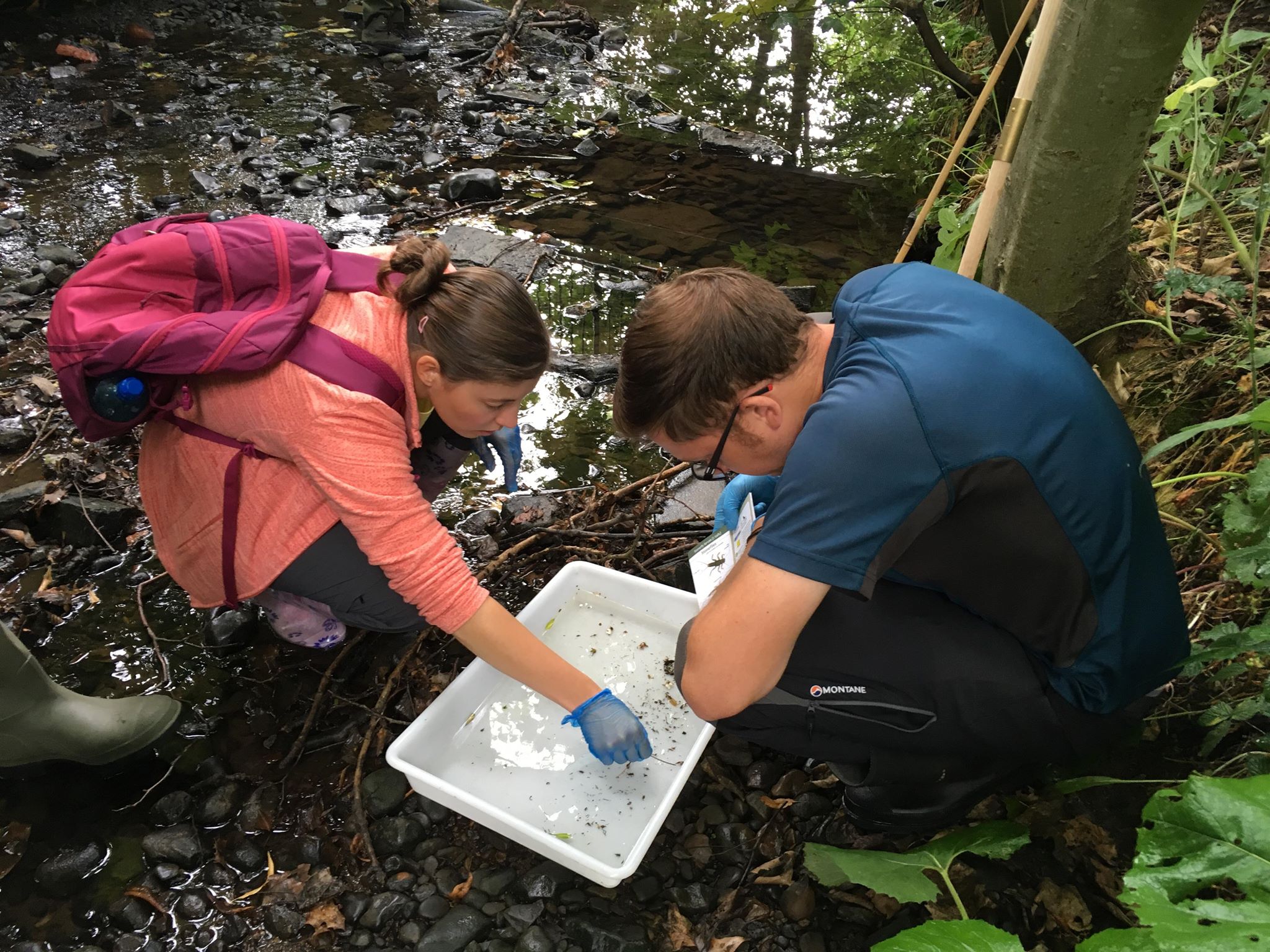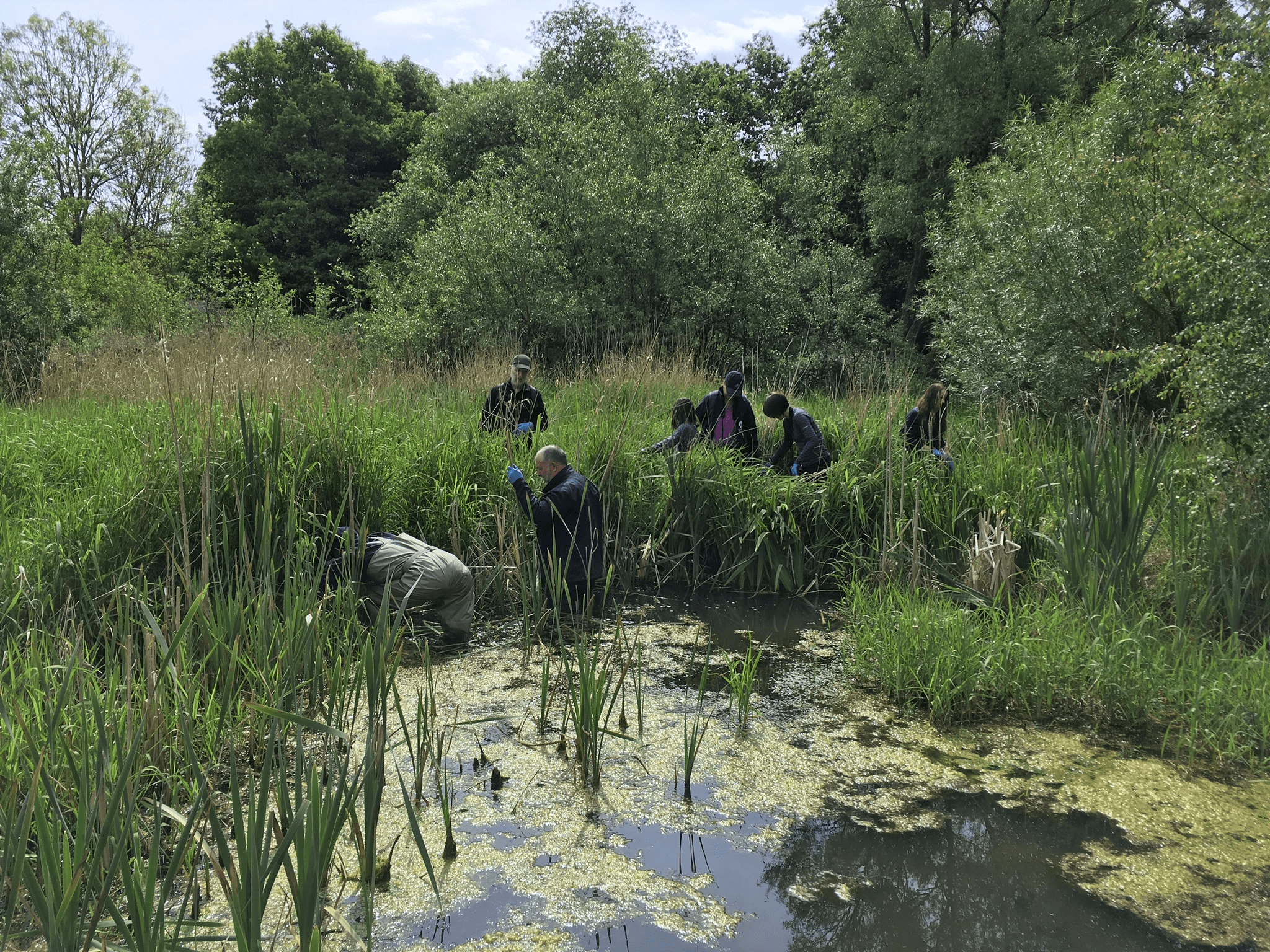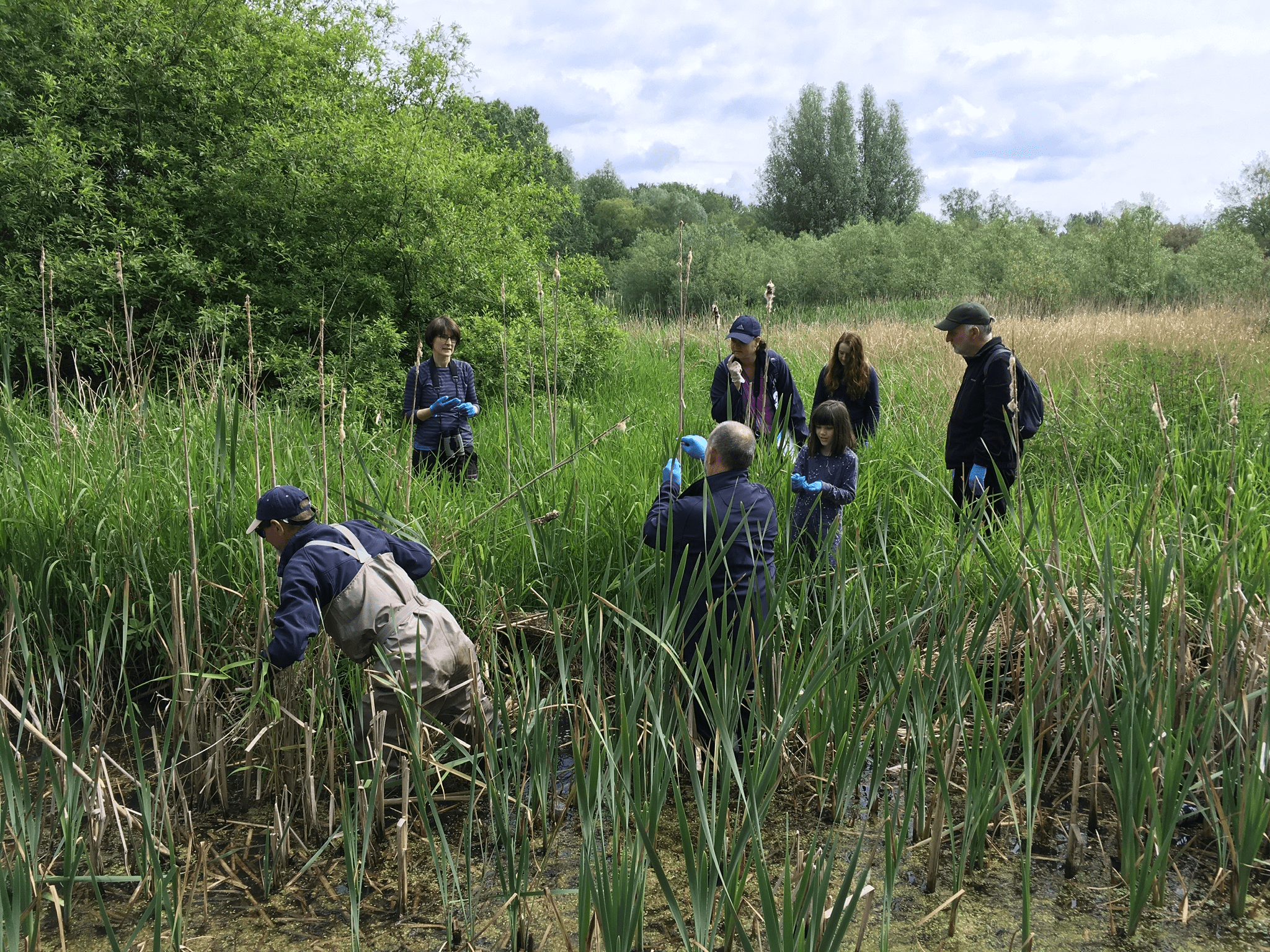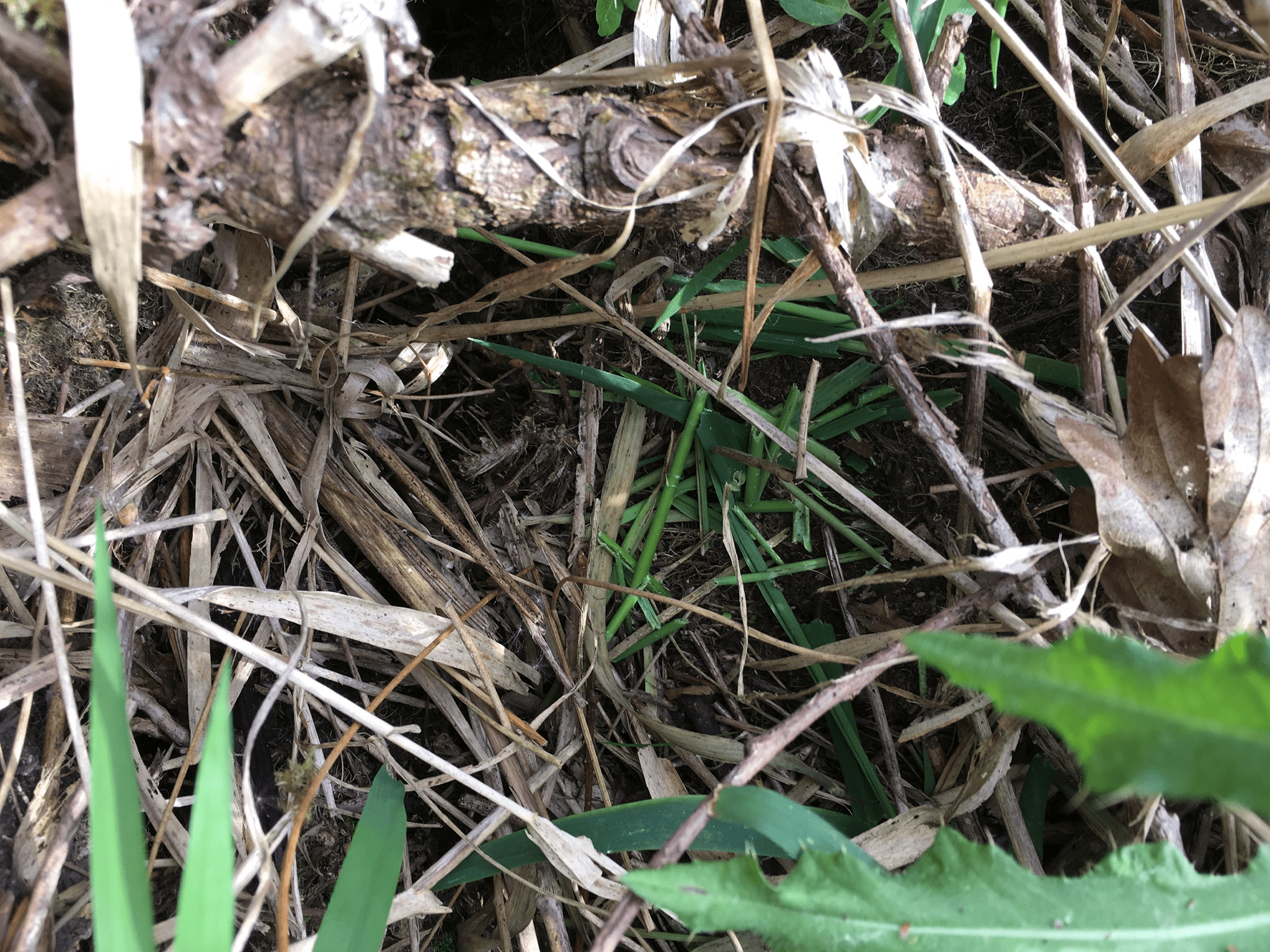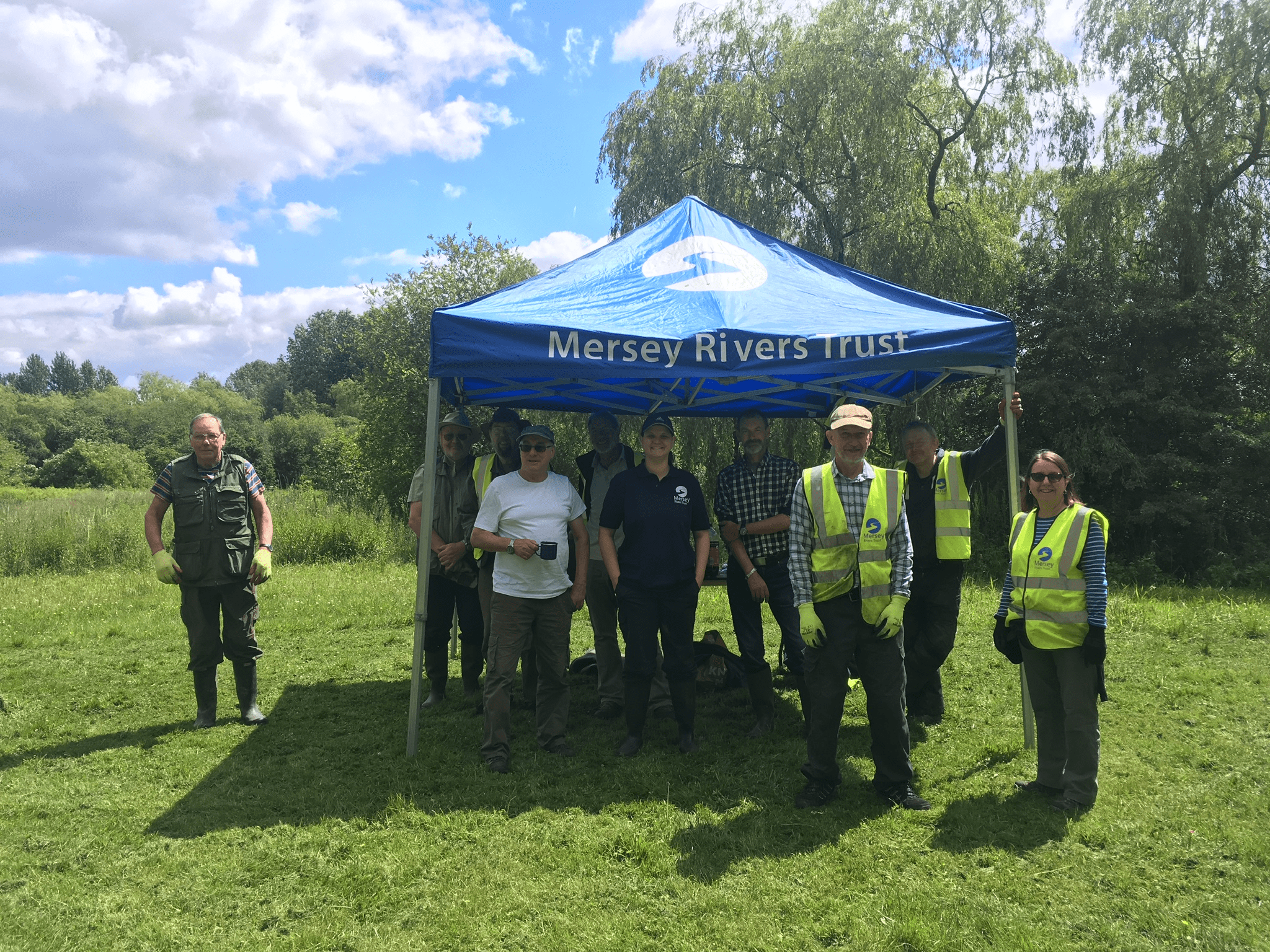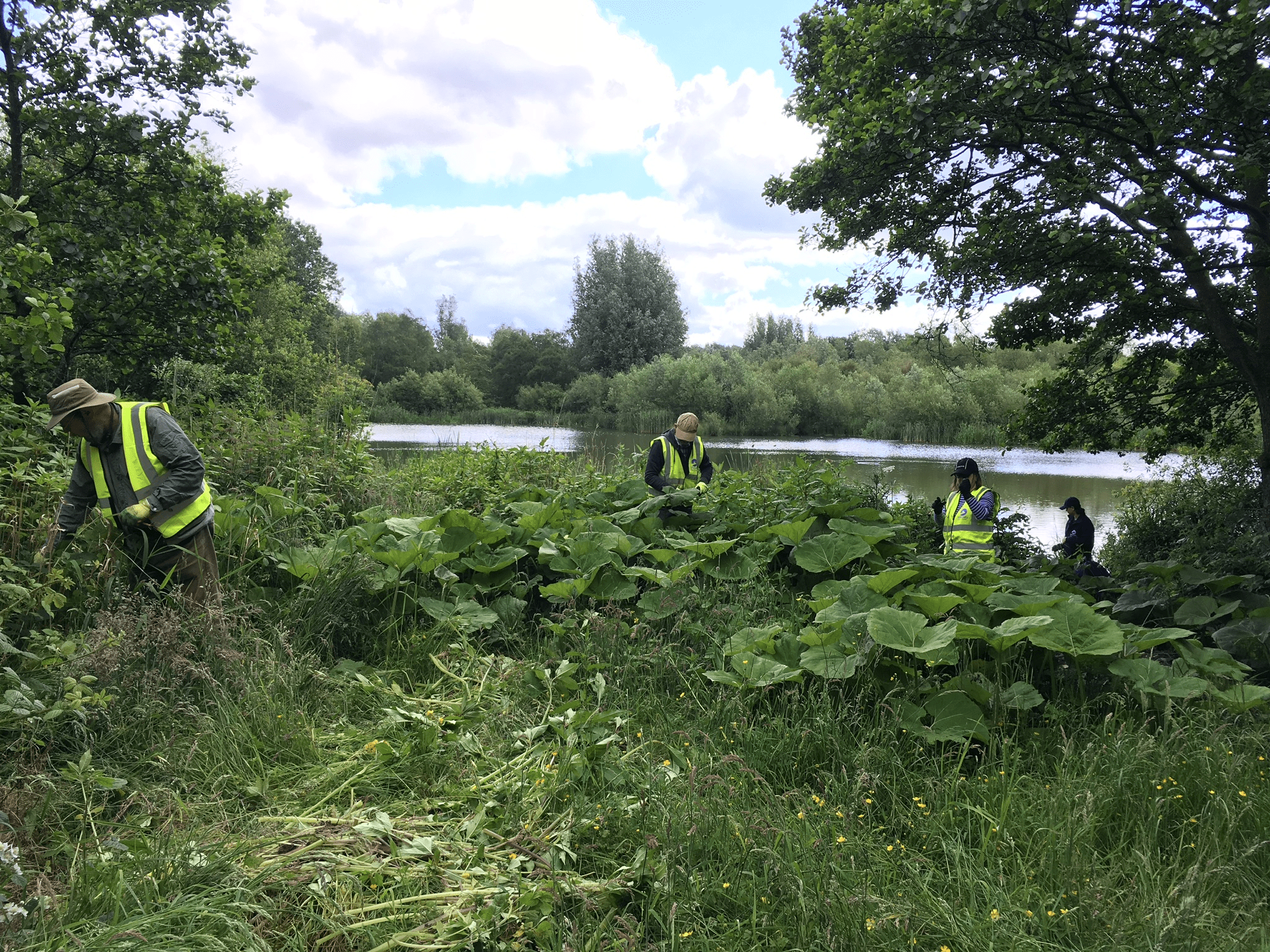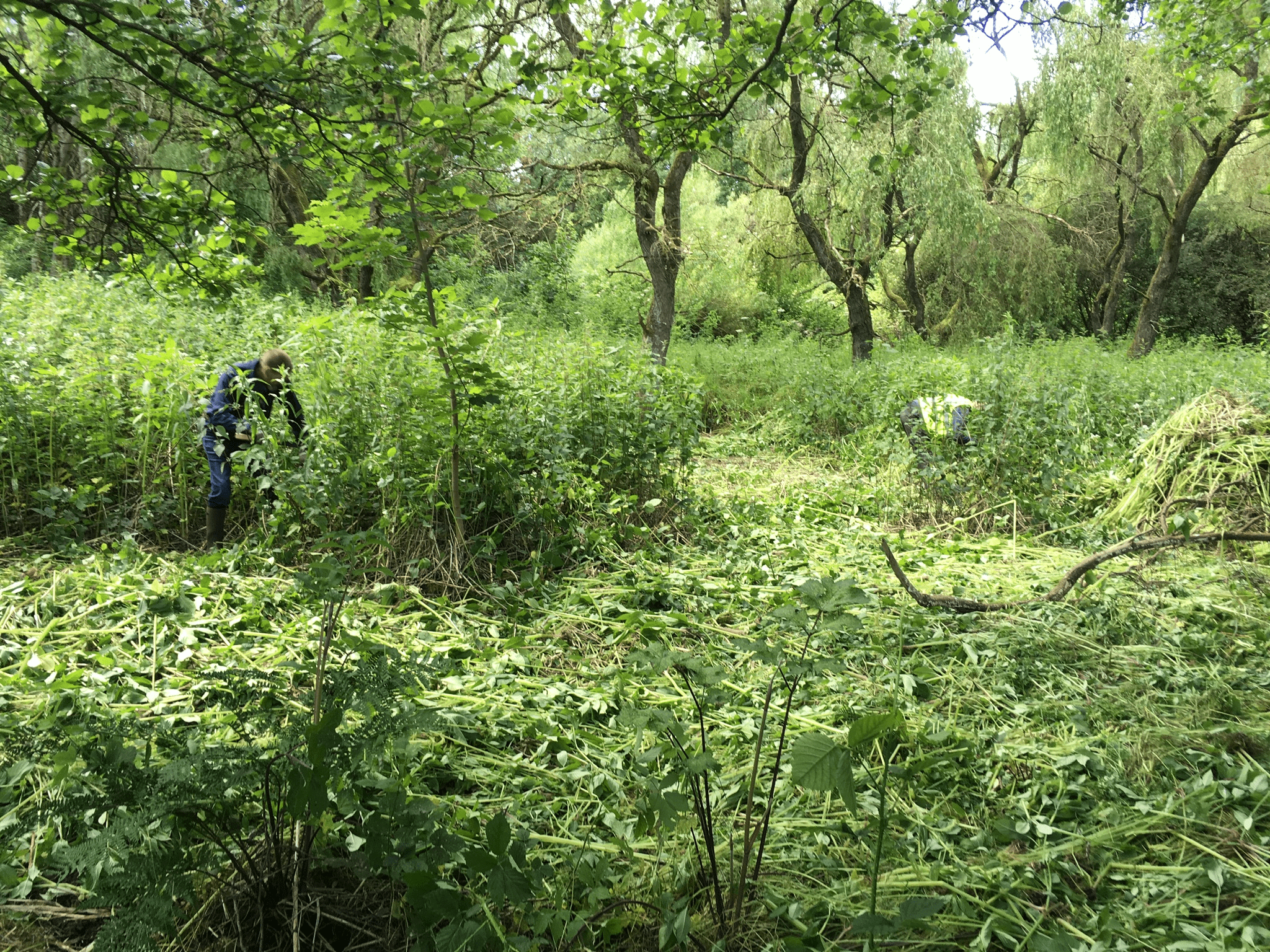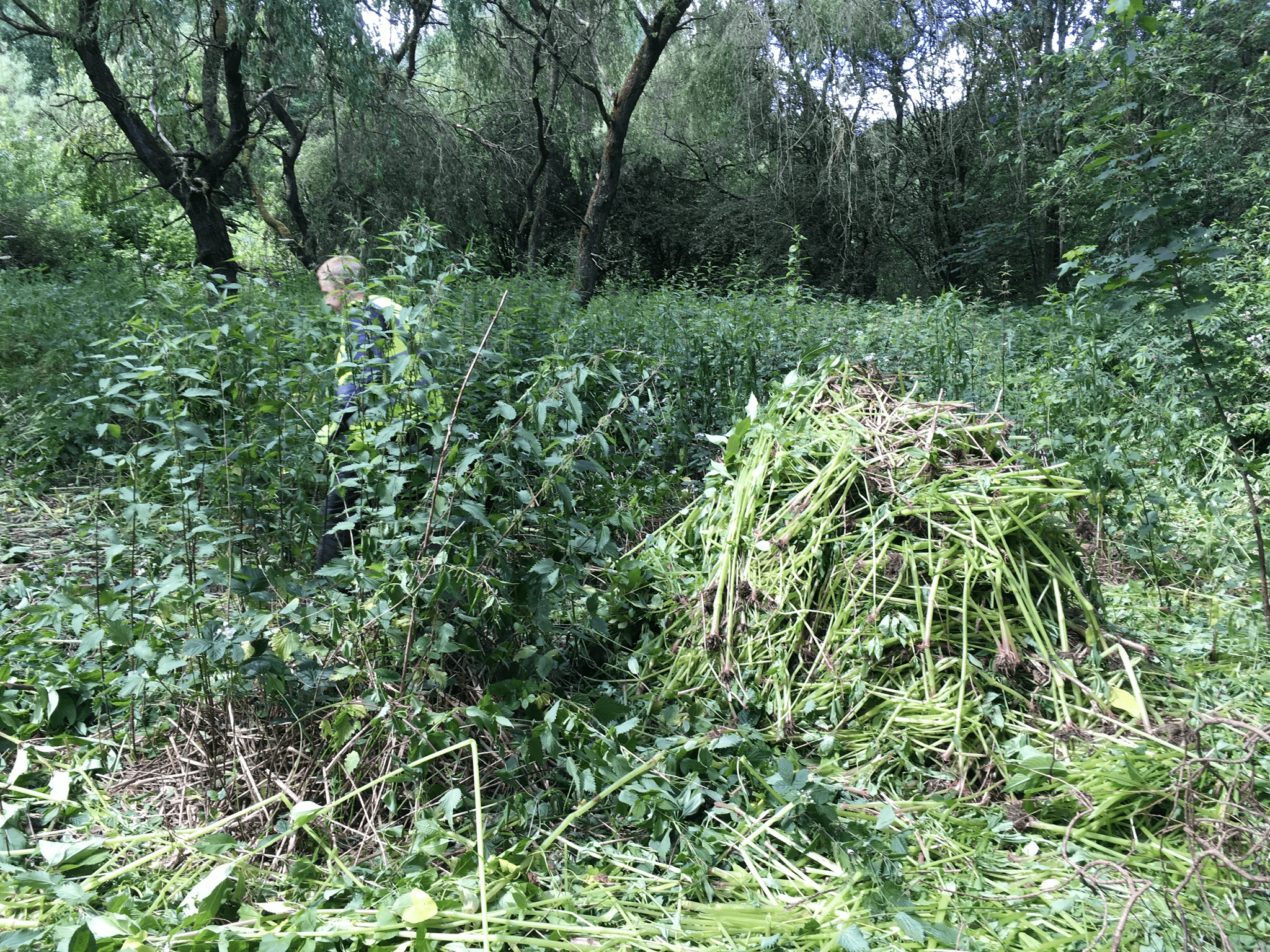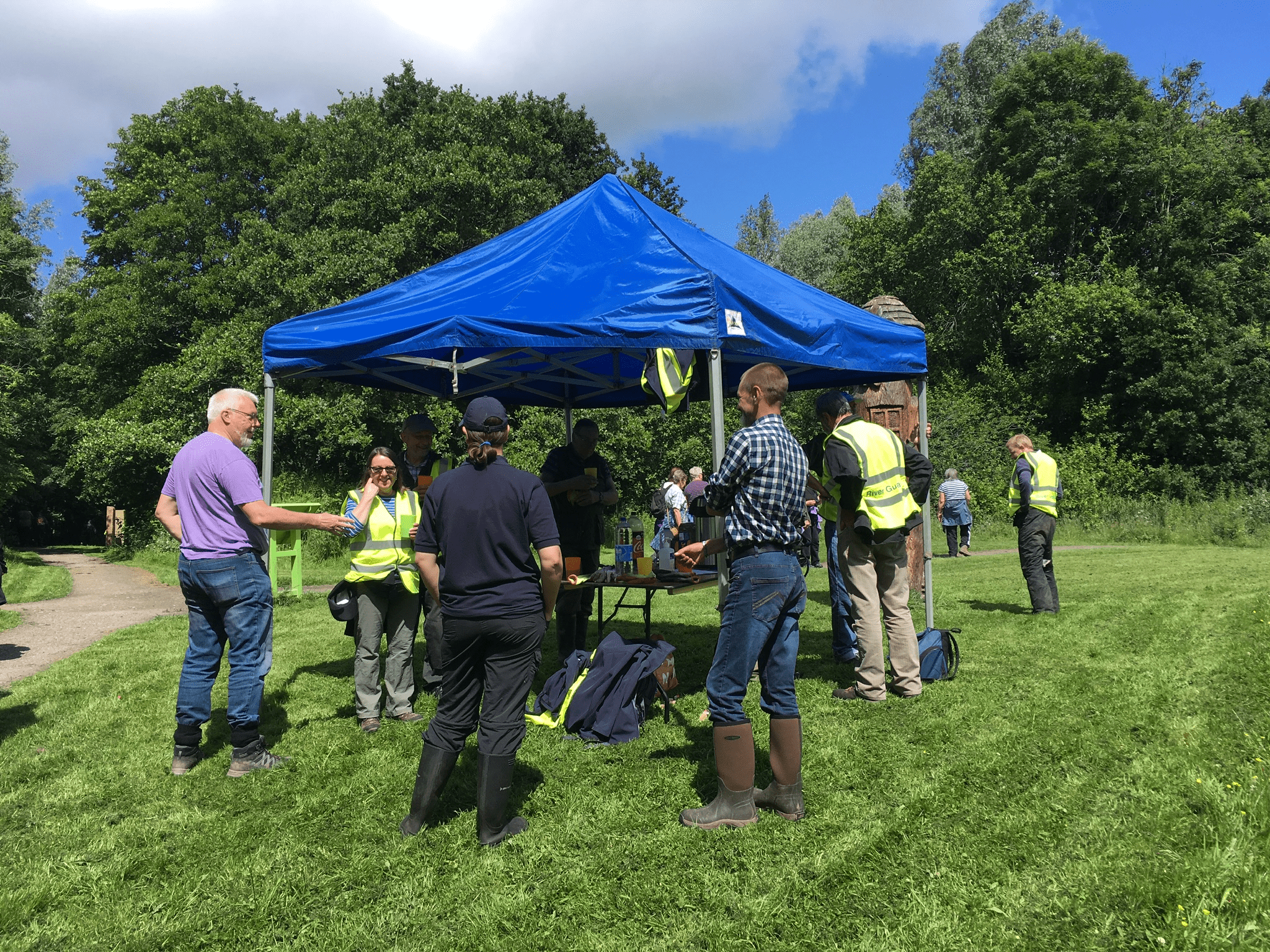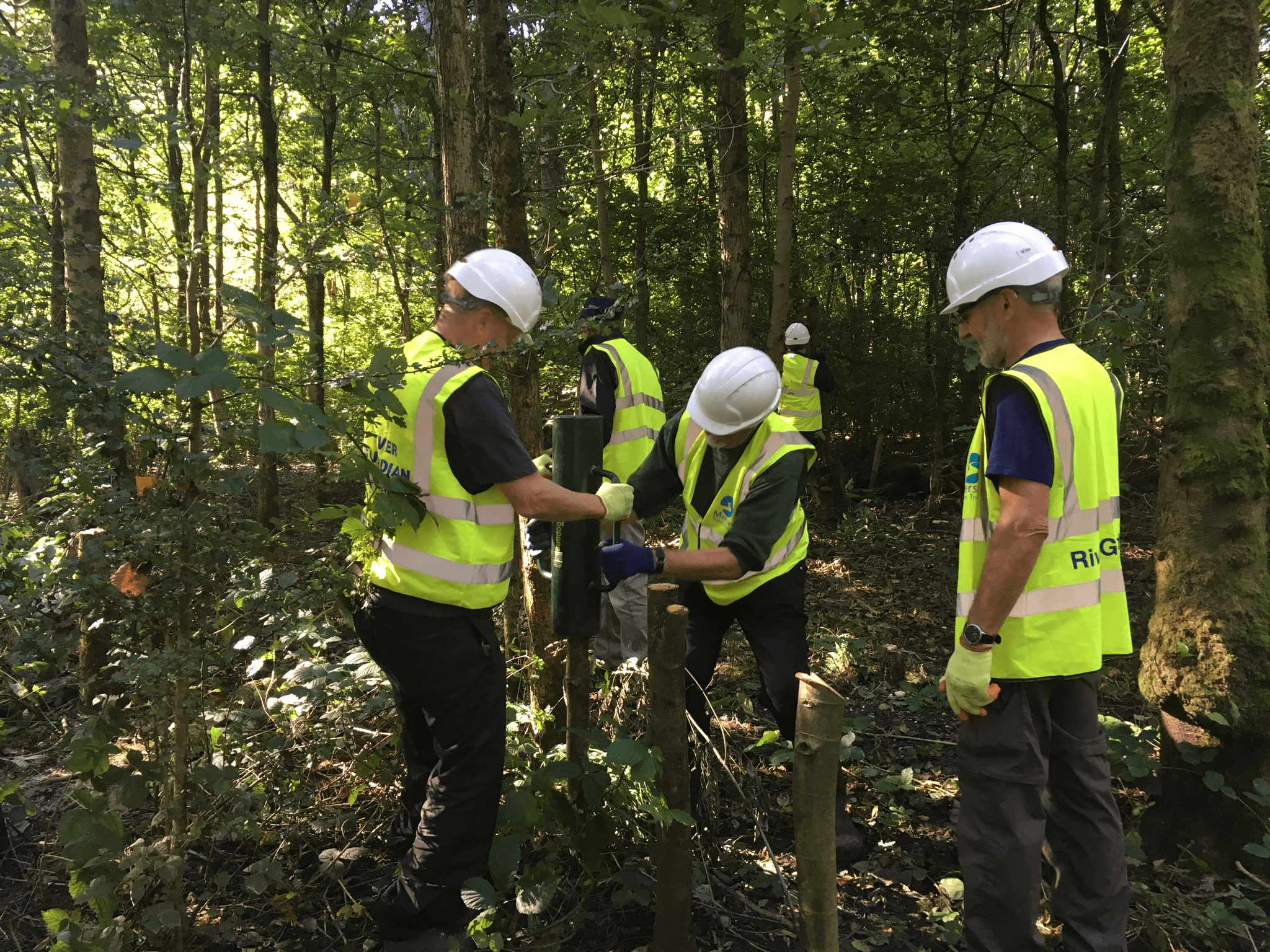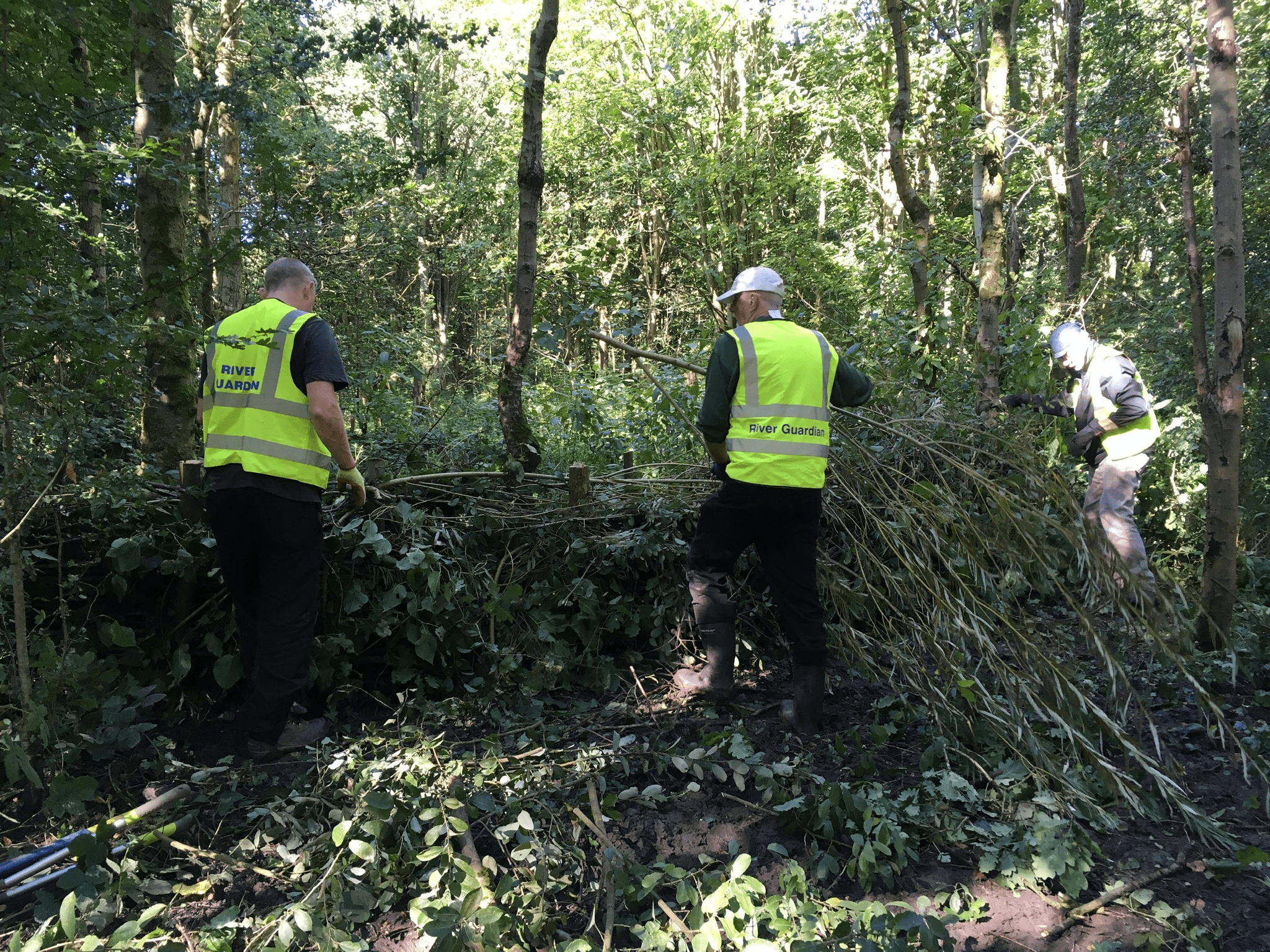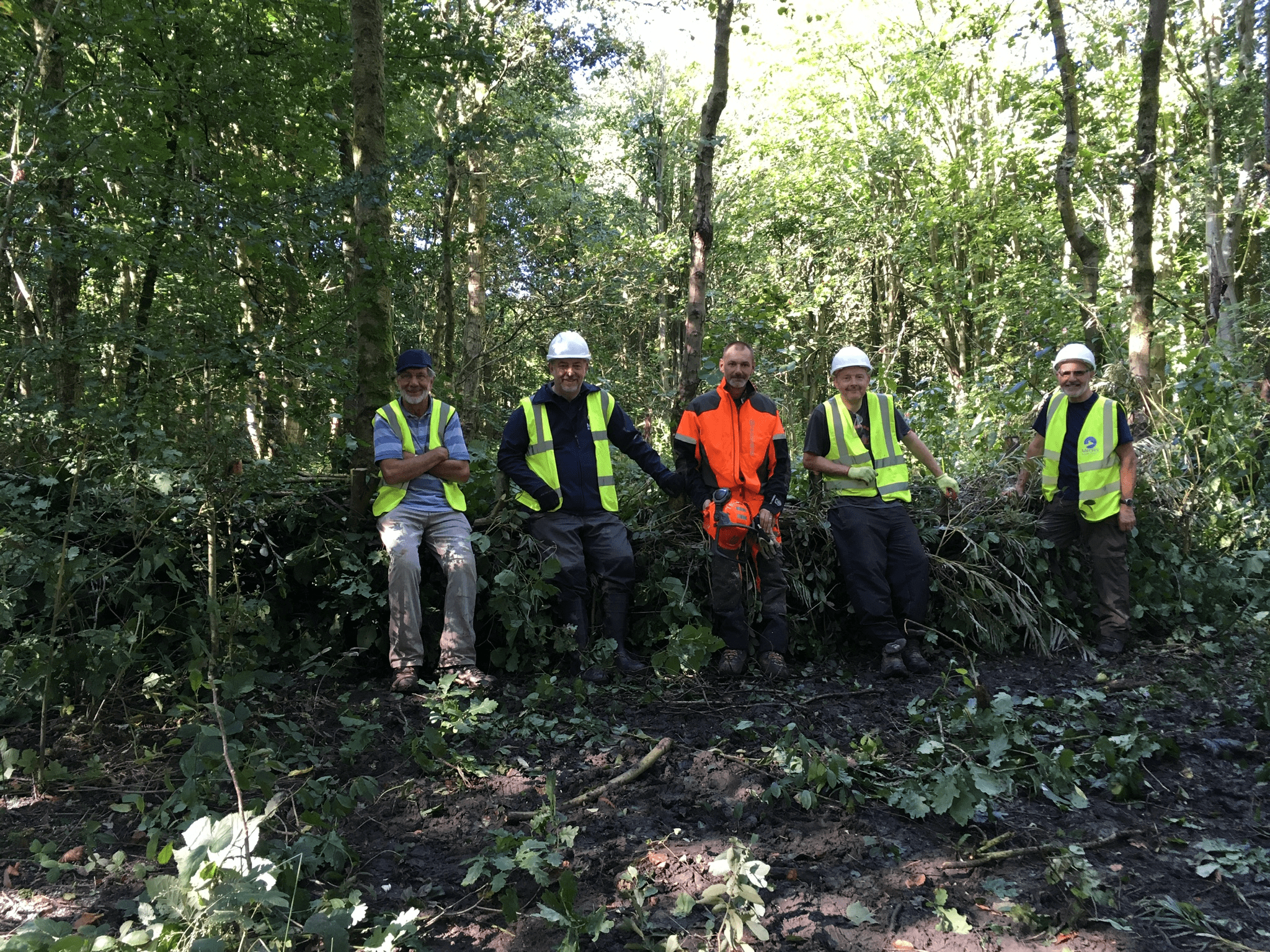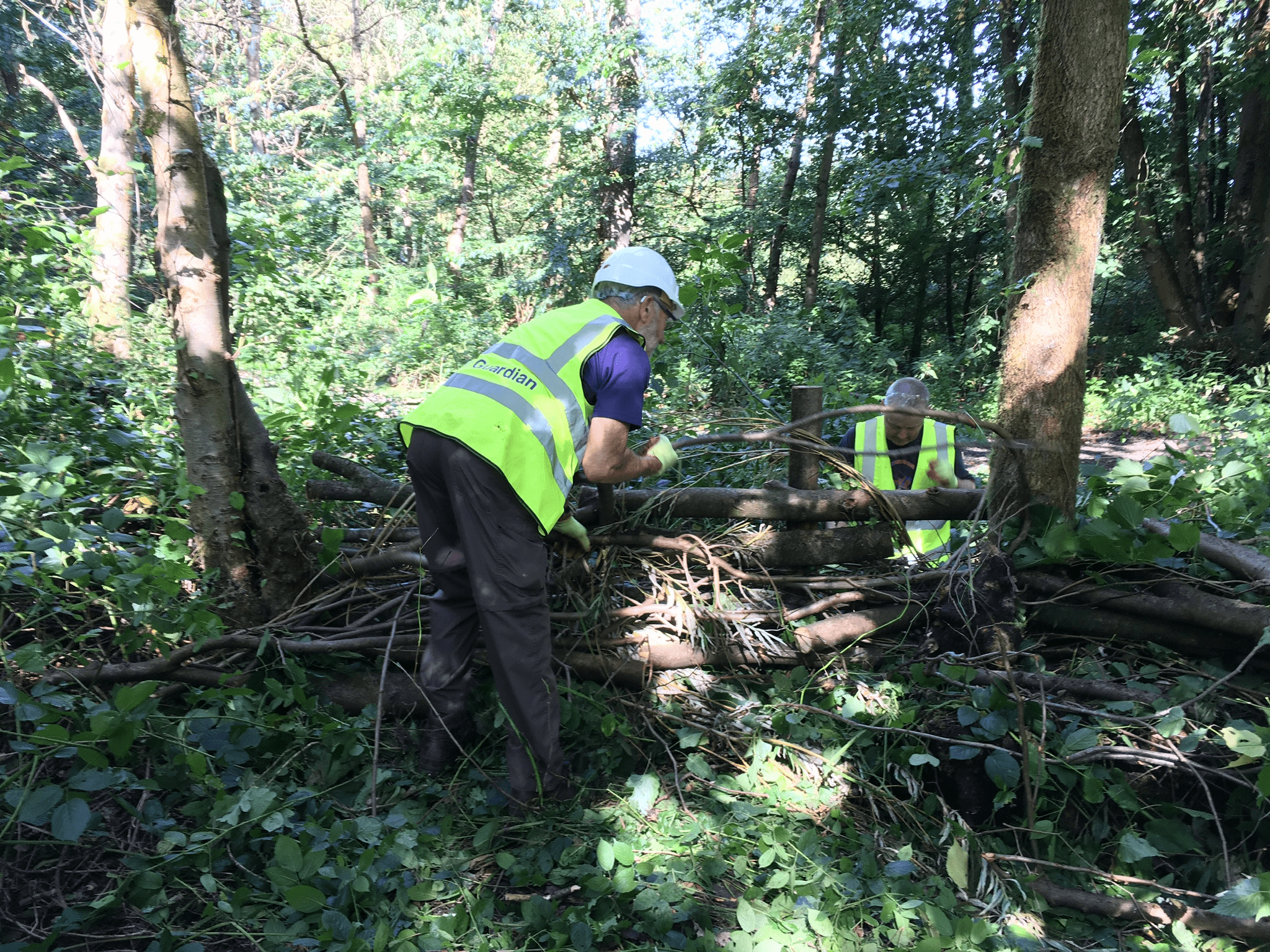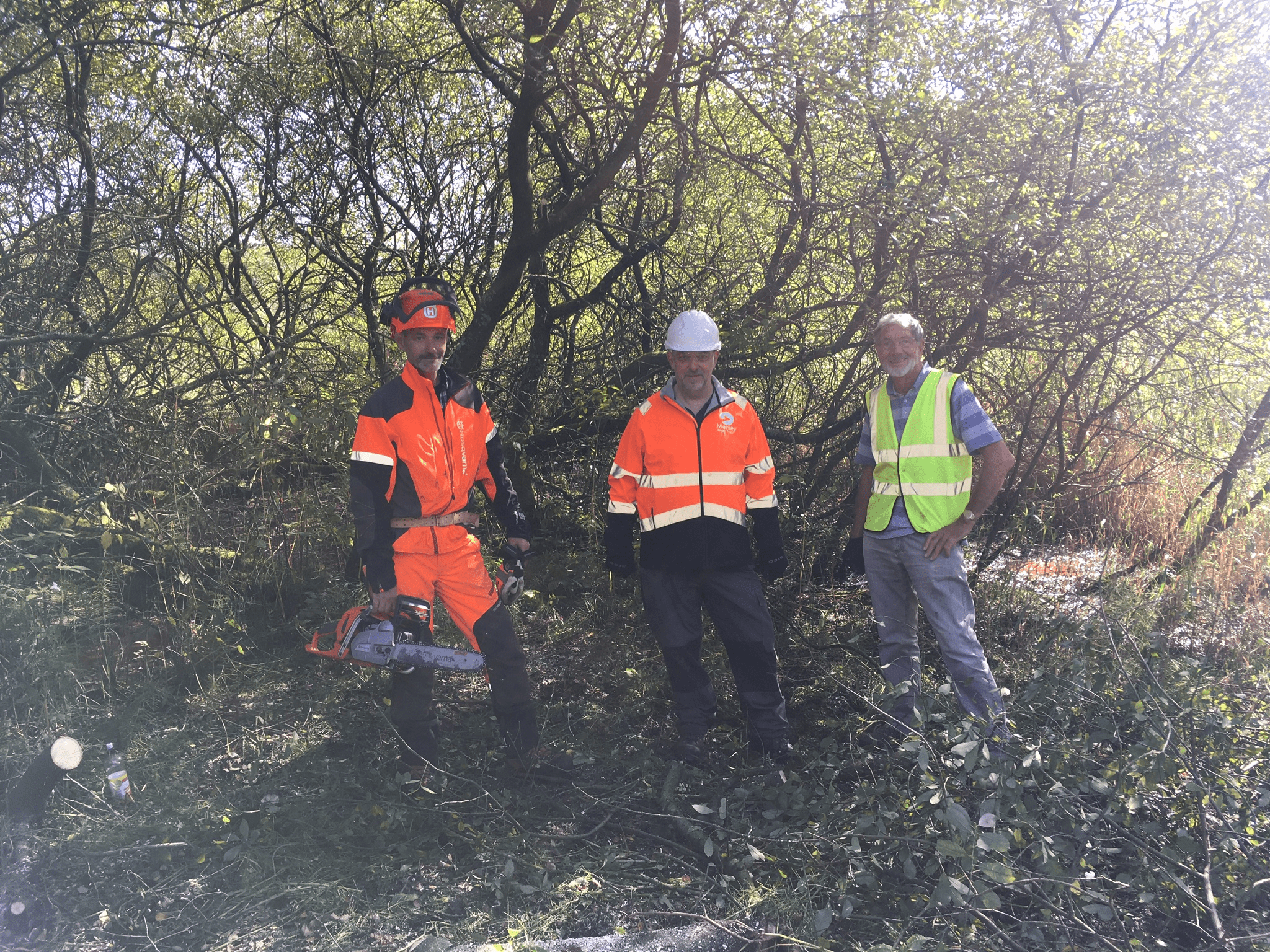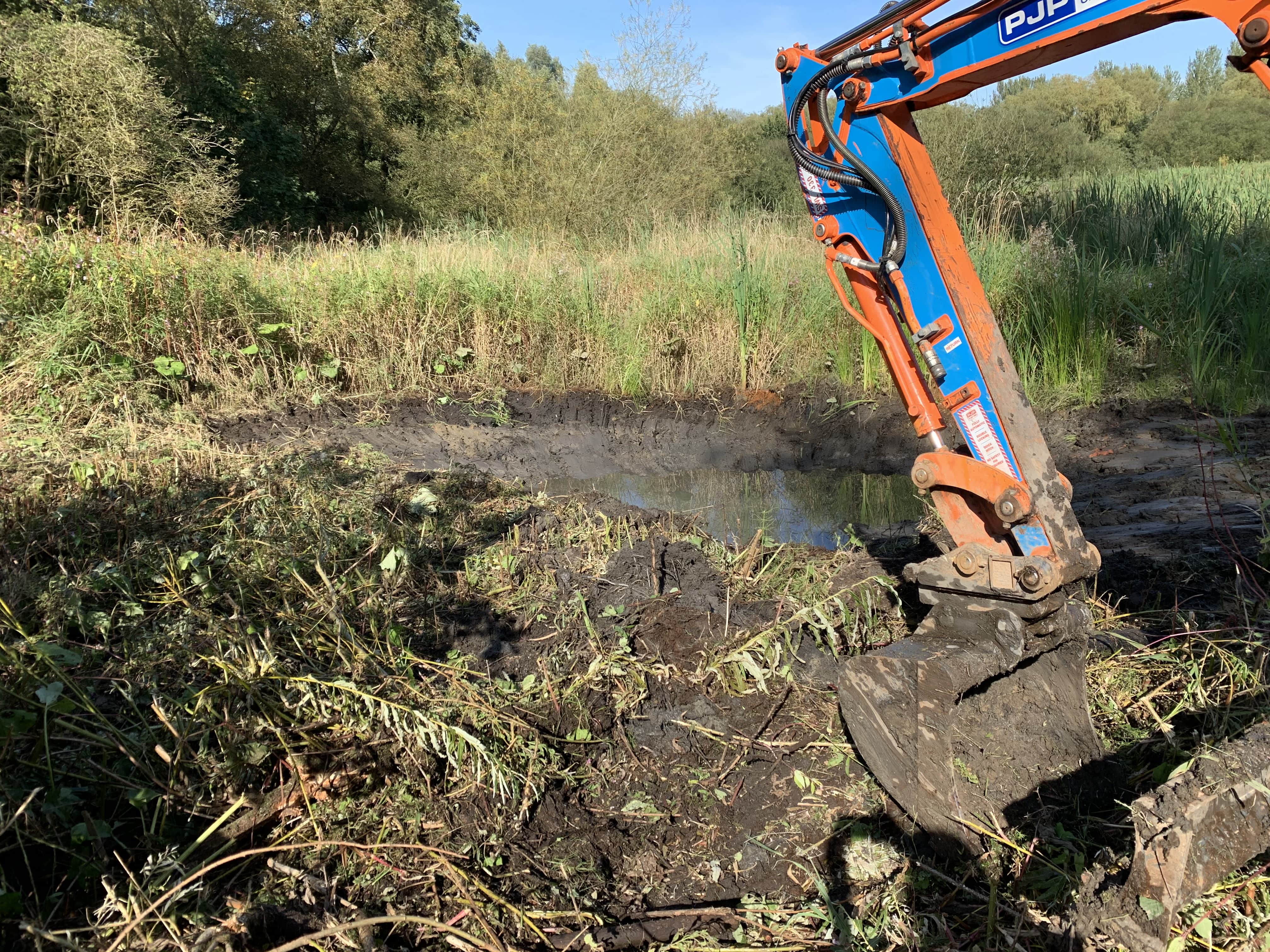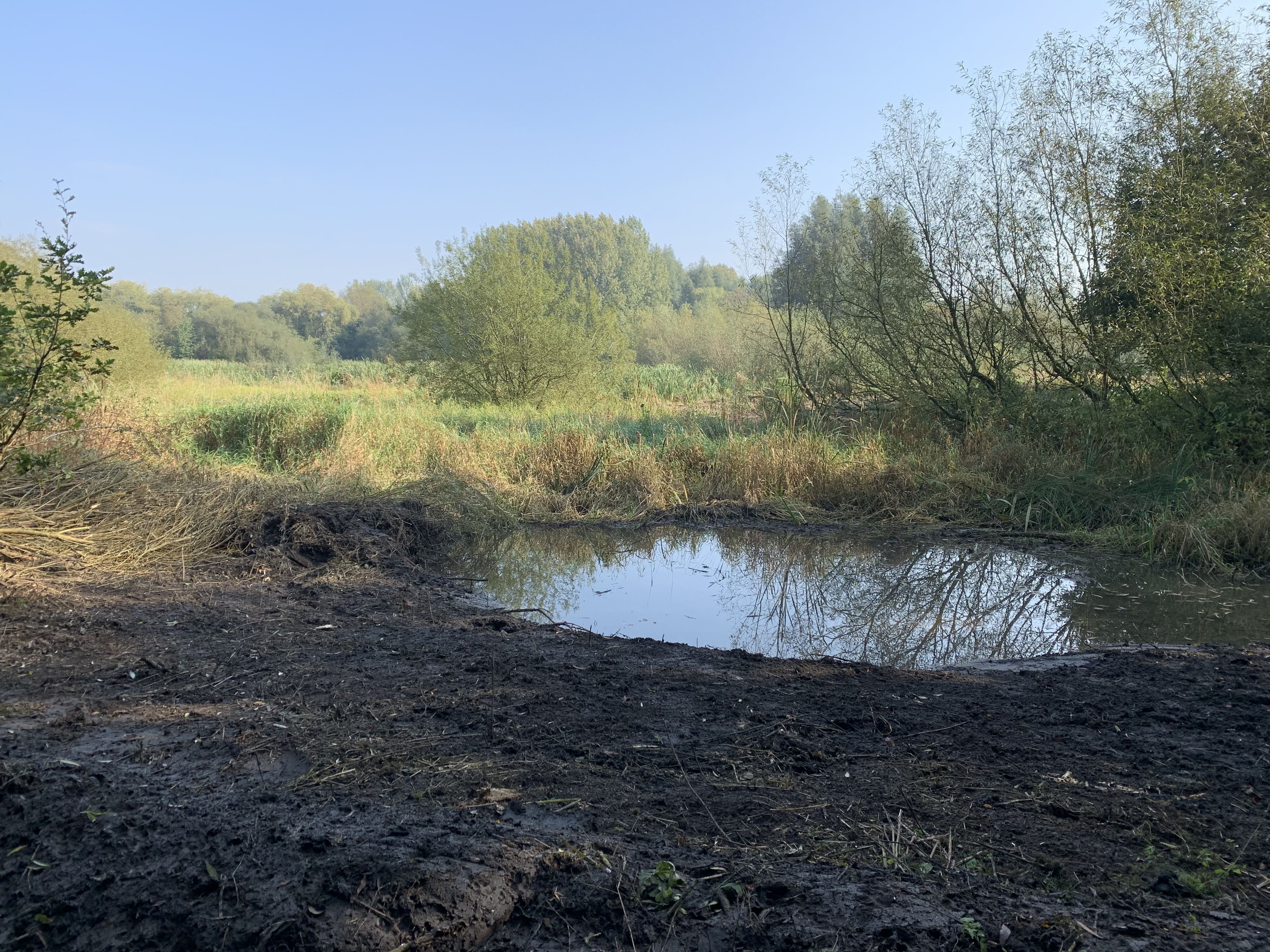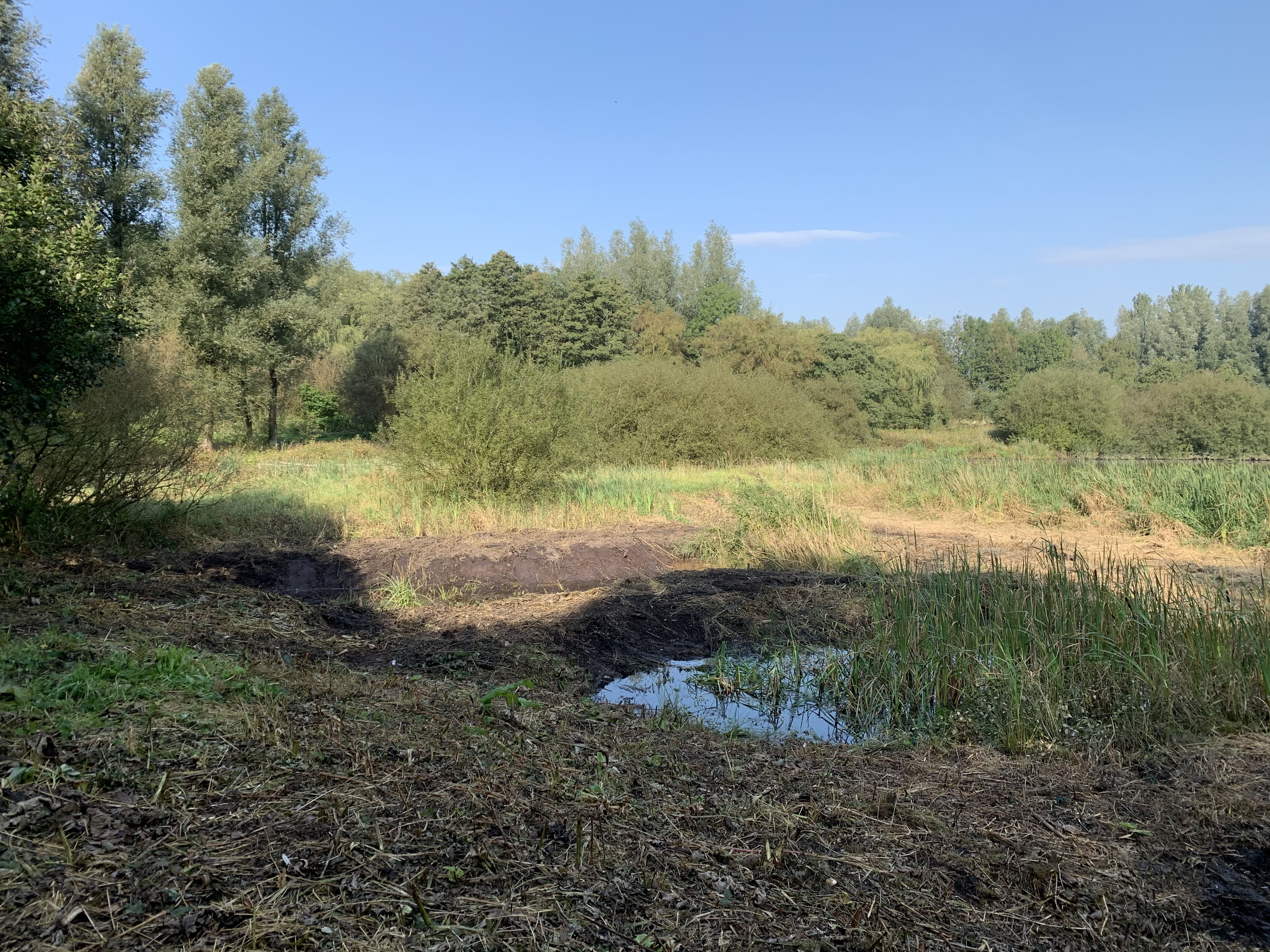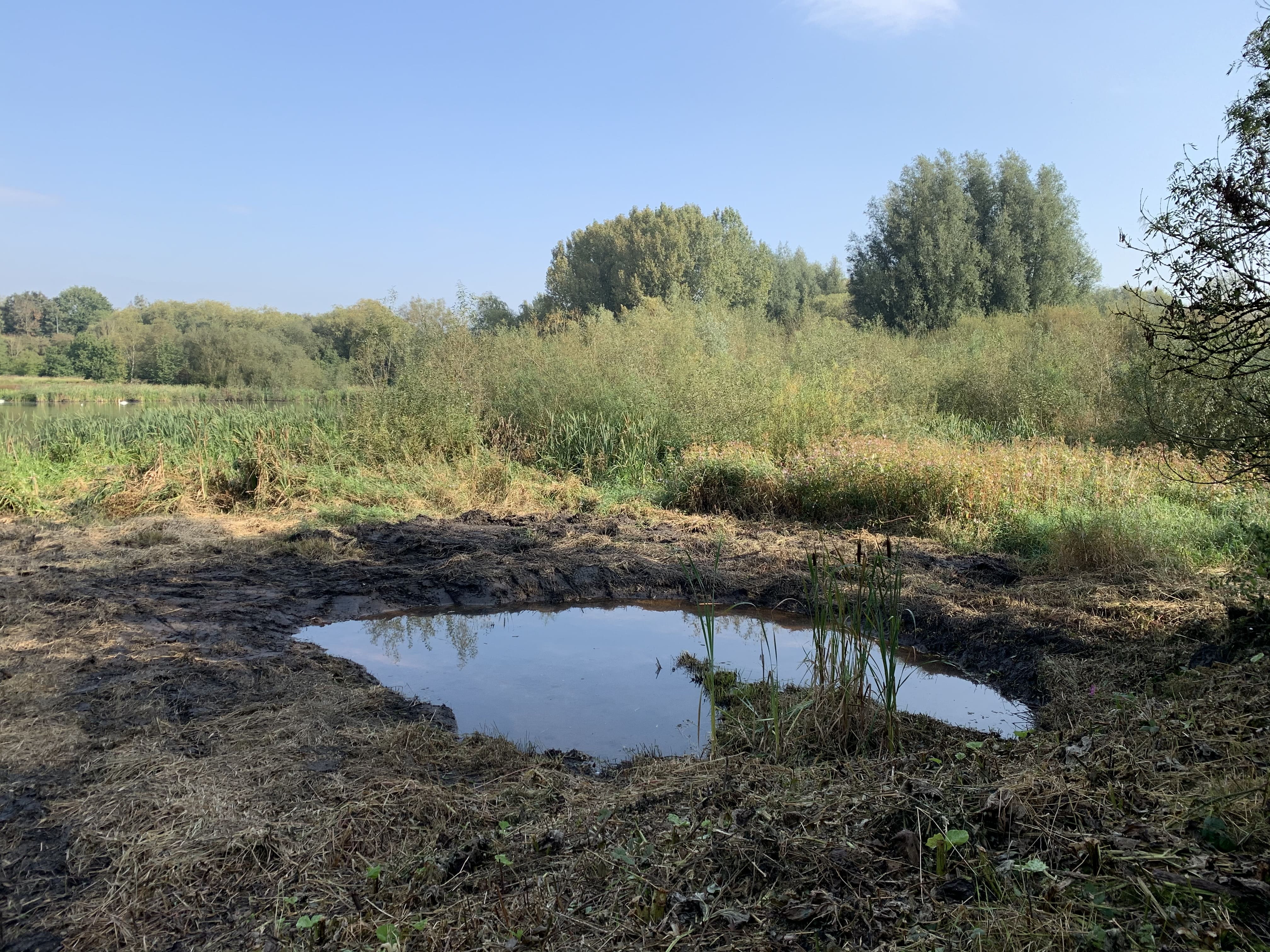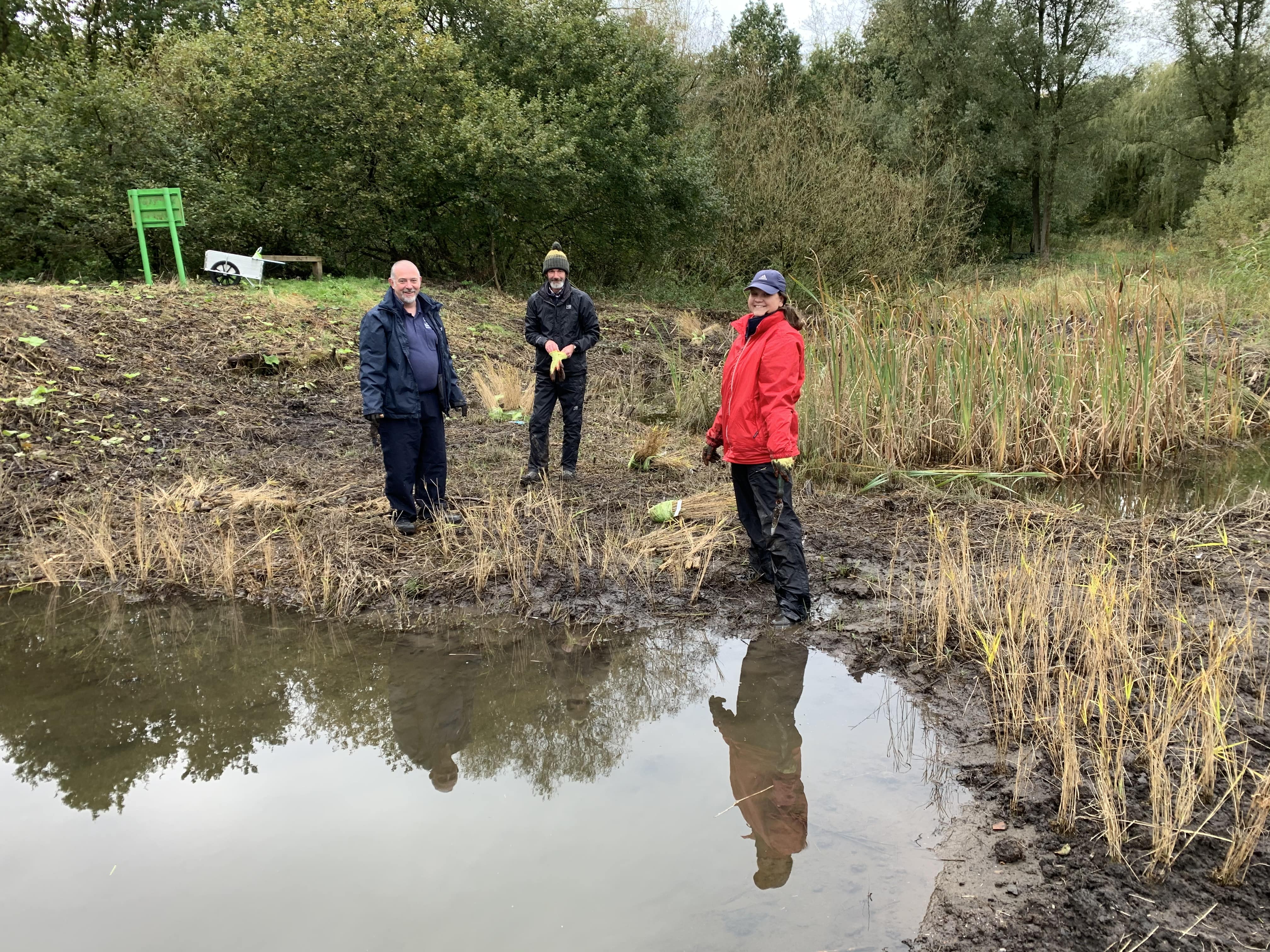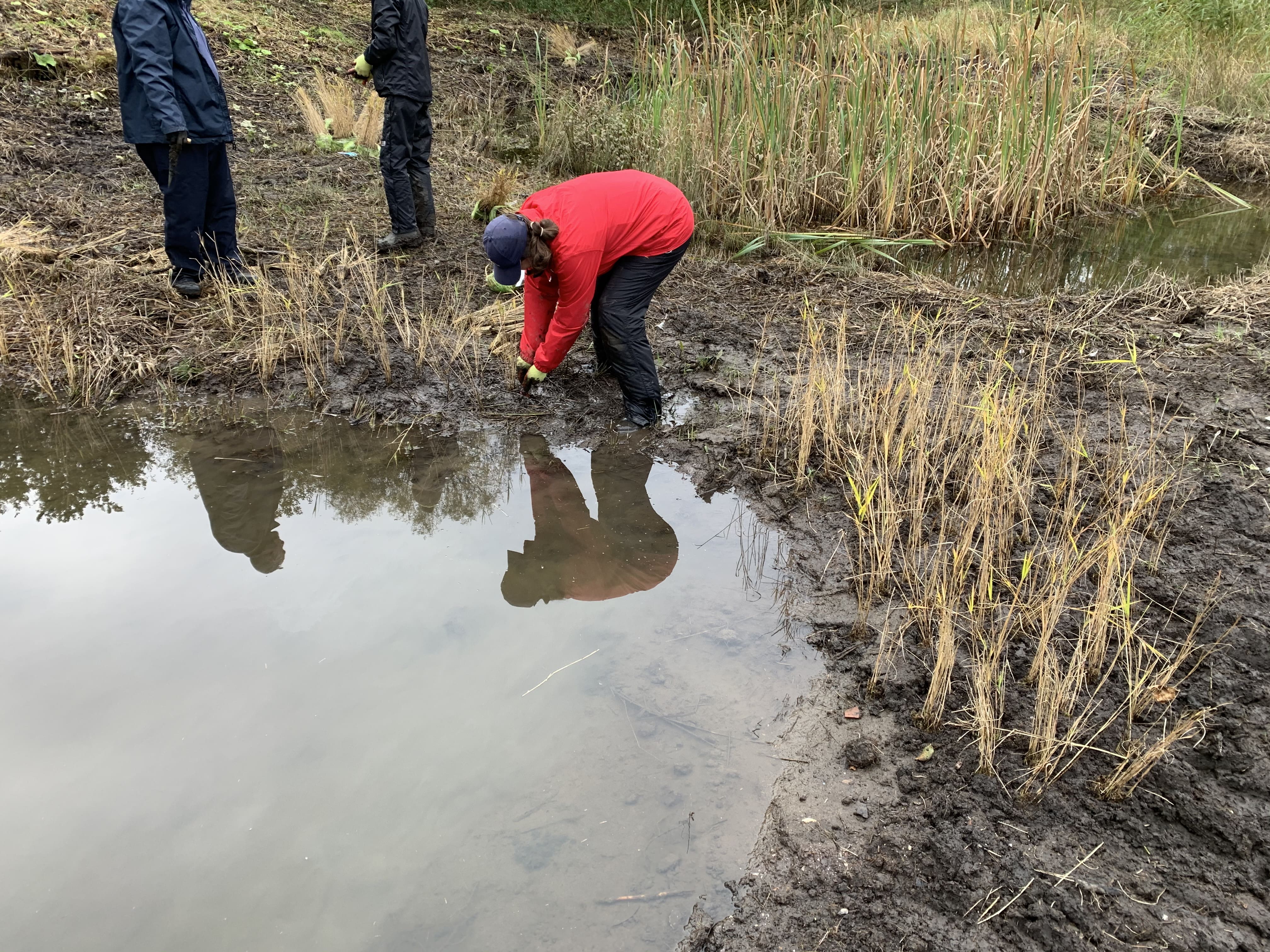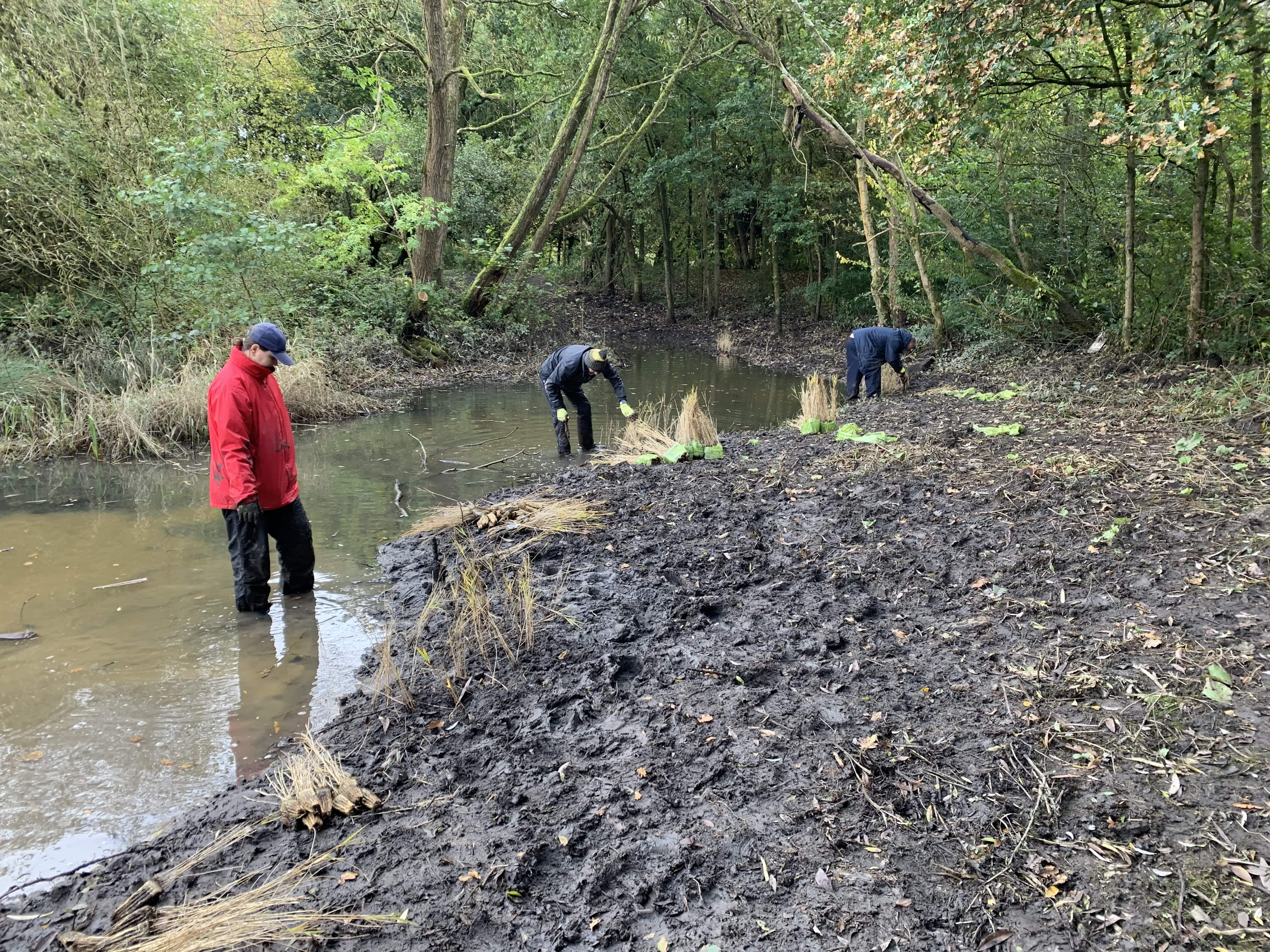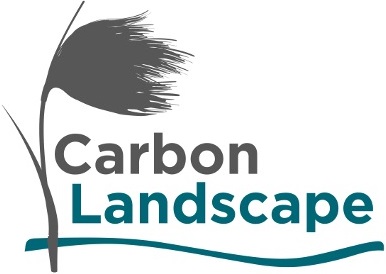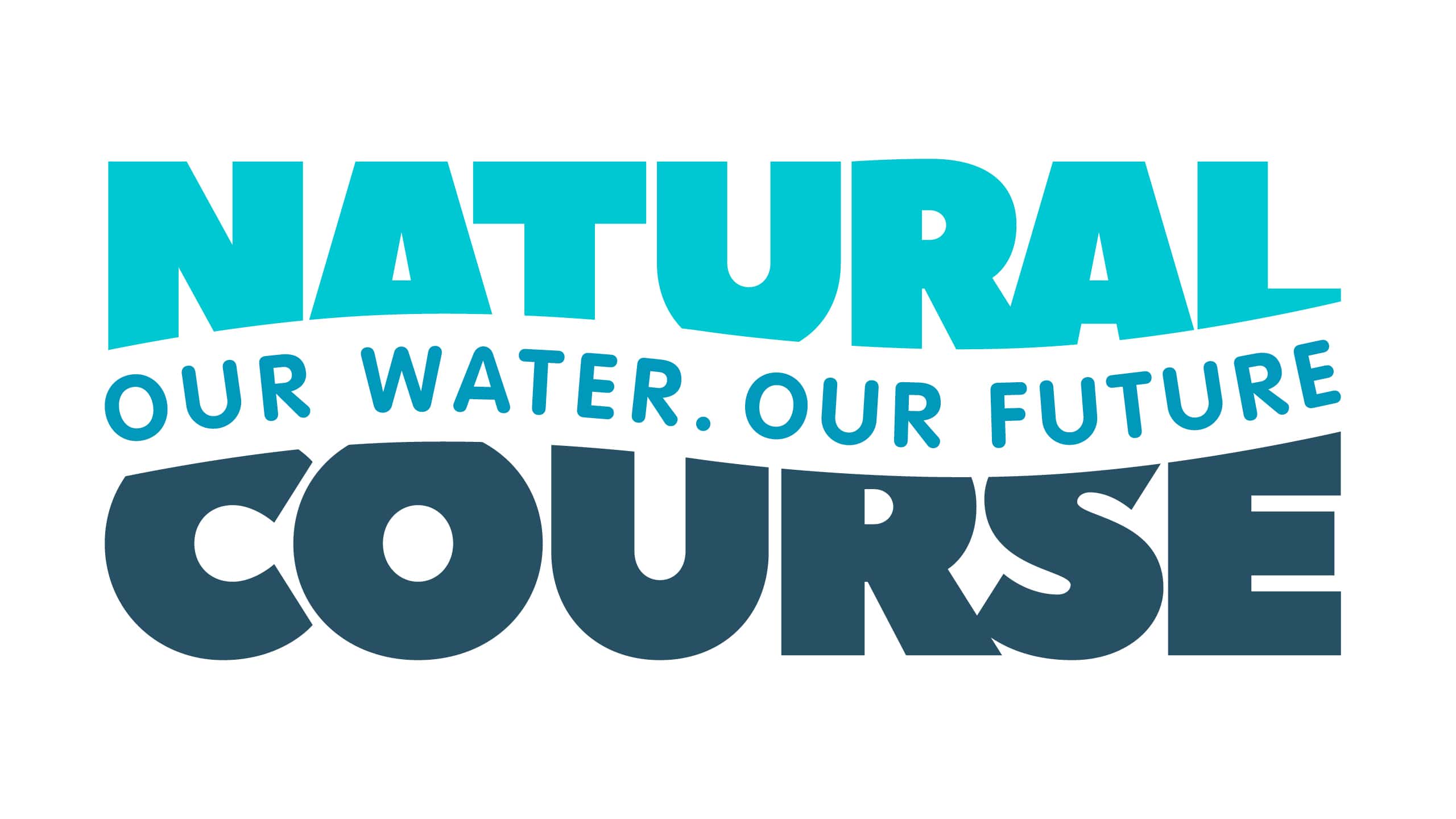Carbon Landscape
The Mersey Rivers Trust is leading on the Hey Brook Revival project as part of the Heritage Lottery Funded Carbon Landscape project.
We hope to improve water quality, reduce flood risk and create habitats within Low Hall LNR and the surrounding areas. Our main aims of the project are…
- Recruit and train volunteers as ‘River Guardians’ to monitor water quality in several locations throughout the target area.
- Create reed beds within Low Hall LNR to increase attenuation of water to reduce flooding downstream, provide habitats to a variety of wildlife and improve water quality by acting as a filter.
- Install leaky dams to ‘slow the flow’ therefore reducing flooding downstream.
- Raise awareness of misconnections and the negative impacts they have on water quality and subsequently people and wildlife.
- Various other volunteer events such as invasive species removal, litter picks, kick sampling and water vole surveying.
The project begins where Borsdane Brook meets the B5239 Bolton Road. It then flows south through Borsdane Wood LNR to Hindley. From Hindley, the brook flows through Low Hall LNR to Hey Brook which runs parallel to the Leeds/Liverpool canal into Pennington Flash.
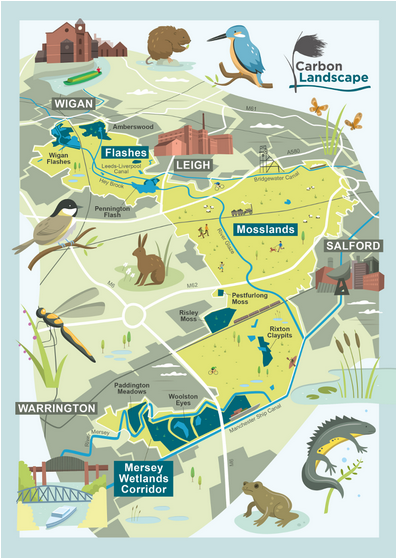
River Guardians - water quality testing
A water sampling training session was held on Wednesday 20th June where we trained 21 citizen scientists to monitor the water quality of their local brooks. Using simple La Motte test tabs we can keep an eye on the levels of Nitrates and Phosphates in Borsdane Brook. Our volunteers were also supplied with a secchi tube to measure turbidity and a Hanna meter to electronically measure pH, water temperature, conductivity and total dissolved solids (TDS). The data is entered into an online survey and mapped.
River Guardians - invertebrate kick sampling
On 17th July we held another training session where 12 volunteers learnt how to 'kick sample'. This is a technique where the bed of the river is kicked to disturb the sediment and the invertebrates that live among it. The invertebrates are collected in a net and the species and abundance are recorded. The type of invertebrates present give us an indication on water quality and can tell us if any pollution incidents have occurred.
Our volunteers are going out on a monthly basis and feeding back the data as part of the Riverfly initiative.
Water Vole Surveys
On 23rd May 2019 Mersey Rivers Trust staff and River Guardians surveyed Low Hall Local Nature Reserve for Water Voles. Locations of burrows, droppings and feeding stations were recorded as well as information on habitats, bank profile and other wildlife.
It is important to undertake these surveys before any construction works take place on site in order to keep this protected species safe.
Balsam Bashing
Himalayan Balsam is an Invasive Non-Native Species (INNS) which out-competes native plant species. It is very widespread but can be controlled by pulling the plant before it seeds.
Mersey Rivers Trust staff and volunteers, along with members of the Friends of Low Hall, had a big balsam bash on 21st June 2019 at Low Hall LNR. Large areas were pulled alongside the paths as well as the sites of the new leaky dams and wetlands. Reeds and seeds will be planted behind the leaky dams and around the wetlands with the aim of out-competing the balsam in future years.
This was a combined event for Mersey Rivers Week 2019.
Building Leaky Dams
On 20th September 2019 River Guardians and the Friends of Low Hall helped MRT staff to build 3 large leaky dams within Low Hall LNR.
Leaky dams are a Natural Flood Management (NFM) technique created by weaving willow and other woody material together to form a barrier. Water and sediment collects behind the dam which 'slows the flow' into the watercourse. This can help to reduce flooding and improve water quality.
The leaky dams within Low Hall LNR were built using materials from on-site. They will capture surface run-off in order to protect the footpath network and reduce sediment, water and nutrient input into the new and existing wetlands.
Pond Construction
Construction of the new wetland pond began in September 2019, however due to poor weather conditions, works had to be postponed. The work was due to re-commence in Spring 2020 however we faced another challenge - COVID-19. All works were put on hold until we came out of lockdown.
In September 2020 the digging re-commenced in perfect weather conditions. One new pond was created and 4 existing ponds were re-landscaped to provide valuable habitat to a range of wildlife. Large areas of Himalayan Balsam and scrubland were cleared and the excavated spoil was landscaped around the ponds, ready to be seeded with a native wildflower mix.
Reed planting and seeding
1,500 Common Reed (Phragmites) plugs were planted in and around the new and re-landscaped ponds to provide habitat and act as a filtration system to improve water quality. 5kg of pond-edge flower mix seed was sown around the ponds and on the areas of landscaped spoil. It was hoped that this would be a volunteer task day however due to local COVID-19 restrictions, only Mersey Rivers Trust staff were able to participate.
Interpretation
